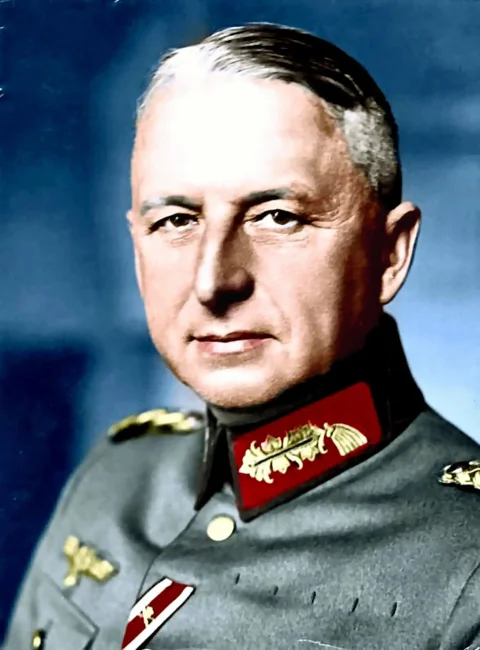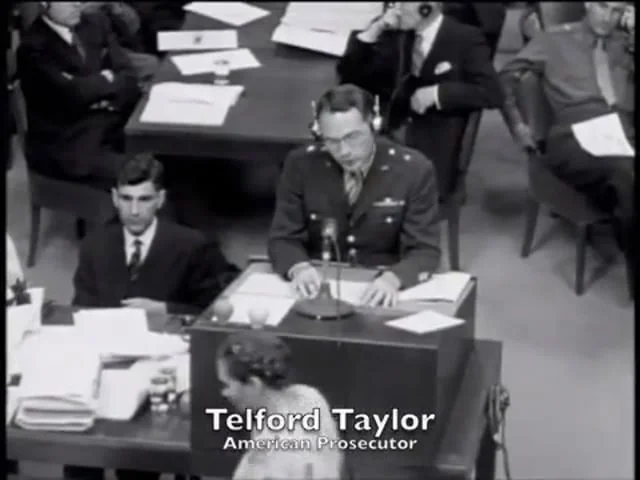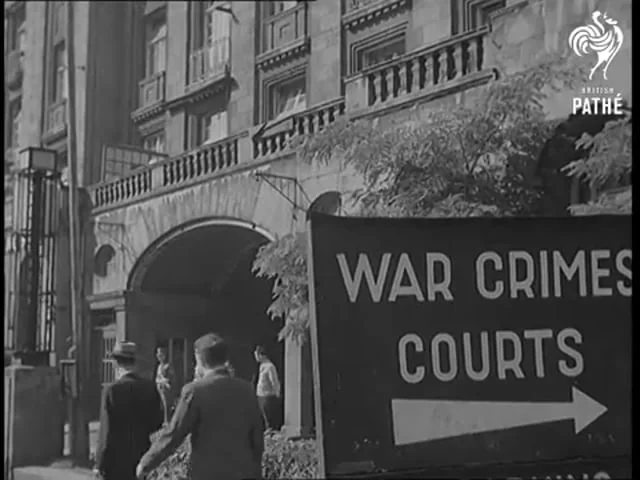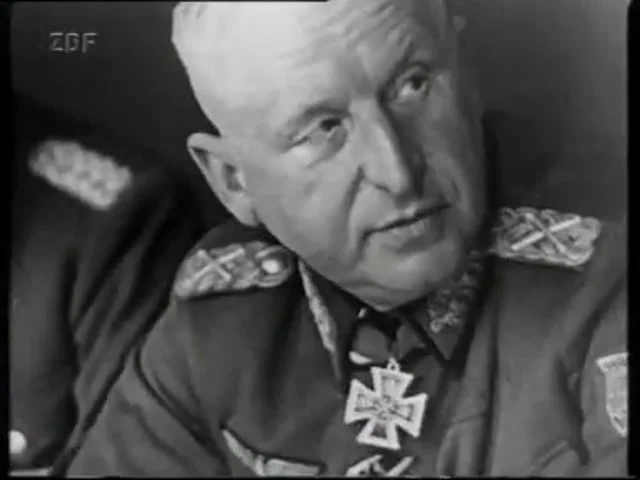- Military History
- Biographies
- Militarians Biographies
- Generalfeldmarschall Erich von Manstein
Generalfeldmarschall Erich von Manstein
One of the most successful German commanders of World War II or war criminal?
Erich von Manstein was among the most accomplished German commanders of World War II. An advocate of the German doctrine of Bewegungskrieg (maneuver warfare), he devised the operational strategy for the German incursion in the Ardennes Forest, which resulted in the swift capture of France in 1940.
He commanded a Panzer corps during the offensive toward Leningrad in 1941 and an army in the Crimea, culminating in the seizure of Sevastopol in 1942. As commander of Heeresgruppe Don, he directed the unsuccessful effort to salvage the German position at Stalingrad, subsequently delivering a significant defeat to Soviet forces during the third battle of Kharkov in March 1943, likely his most notable triumph. This is a military analysis of Manstein's most significant battles, detailing his tactics, decisions, and character traits that contributed to his success and established him as one of the most esteemed German commanders.
Index of Content Erich von Manstein Biography
- Introduction to Erich von Manstein
- The Early Years of Erich von Manstein, 1887-1913
- The Military Life of Erich von Manstein 1914-43
- World War I, 1914-18
- Service in the Reichswehr, 1919-35
- Wehrmacht Service, 1935-39
- World War II - Poland 1939
- World War II - Sichelschnitt and the French Campaign
- World War II - Seelöwe and Barbarossa
- World War II - Drive on Leningrad
- World War II - Conquest of the Crimea 1941-42
- World War II - Return to the Leningrad Front, August–November 1942
- World War II - The Stalingrad Relief Operation, December 1942
- The Hour of Destiny for Erich von Manstein
- World War II - The Front Collapses, January-February 1943
- World War II - Kharkov 1943: The Backhand Blow
- World War II - Operation Zitadelle
- World War II - Retreat to the Dnepr
- World War II - Hube's Pocket
- Erich von Manstein and the Opposing Commanders
- When the War was over for Erich von Manstein
- Inside the Mind of Erich von Manstein
- Erich von Mansteins’ Life in Words
Introduction to Erich von Manstein
From the 17th century, the Prussian Army developed a tradition of Bewegungskrieg (maneuver warfare), which was gradually refined by the creation of the Groβer Generalstab (Great General Staff) in the 19th century. Due to the necessity of having to fight enemies on multiple fronts and often outnumbered, Prussian doctrine favored the use of bold operational maneuvering to put the enemy in a position of disadvantage and to seek a rapid conclusion to campaigns in a decisive battle before the enemy's superior numbers could be brought to bear.
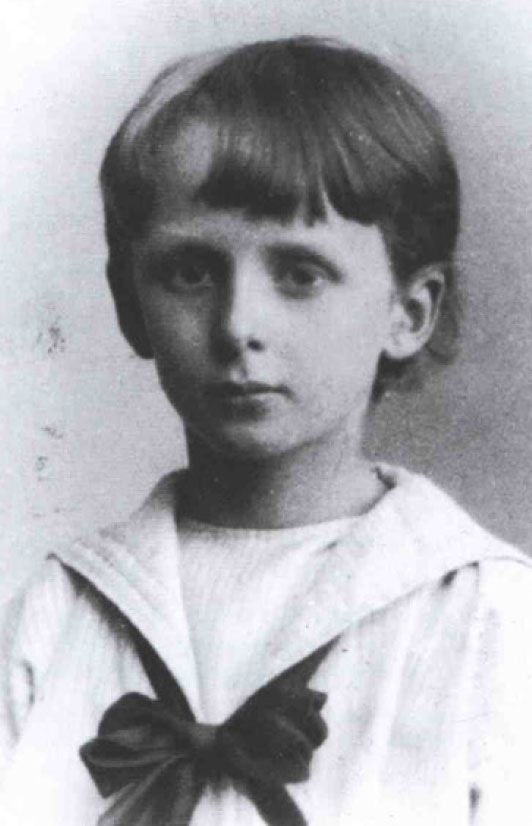
The Prussian armies demonstrated a tremendous talent for Bewegungskrieg during the Austro-Prussian War of 1866 and the Franco-Prussian War of 1870-71, where they succeeded in outmanoeuvring and defeating strong opponents in lightning campaigns. Imperial Germany carried this tradition into World War I, and its Schlieffen Plan tried to use rapid maneuvers to knock France out of the war in a matter of weeks. However, this time Bewegungskrieg failed to achieve a knockout blow in the first round, and Germany was forced to fight a Stellungskrieg (war of position) in the trenches, which resulted in her armies being ground down by four years of attritional combat.
One participant who learned his trade as a young staff officer in this war was Erich von Manstein, who would later become one of the most successful exponents and practitioners of maneuver warfare in the next global conflict.
Manstein believed in the Prussian traditions of Bewegungskrieg as an article of faith, and his operational genius lay in the ease with which he was able to impose simple solutions upon complex military problems. During World War II, Manstein used his talent for maneuver warfare to make vital contributions to the Third Reich's war effort. First, he conceived the Sichelschnitt plan that enabled German armies to defeat France in just six weeks. Second, he conquered Crimea and virtually annihilated four Soviet armies in the process. Third, he helped to prevent a complete collapse of the German southern front in the disastrous winter of 1942–43 and mounted a skilful counteroffensive that regained the operational initiative.
Later, when the war in the east turned against Germany, Manstein advocated a mobile defense as the best means of avoiding costly Stellungskrieg and gradually wearing down the enemy. In addition to being an apostle of maneuver warfare in both offensive and defensive situations, Manstein was a tactical innovator who sought means to increase the battlefield effectiveness of his troops. Prior to the war, he recommended the development of Sturmartellerie units. During the war, he daringly used assault boats to outflank tactical obstacles and experimented with novel formations, such as an artillery division and a heavy Panzer regiment—both of which were very successful.
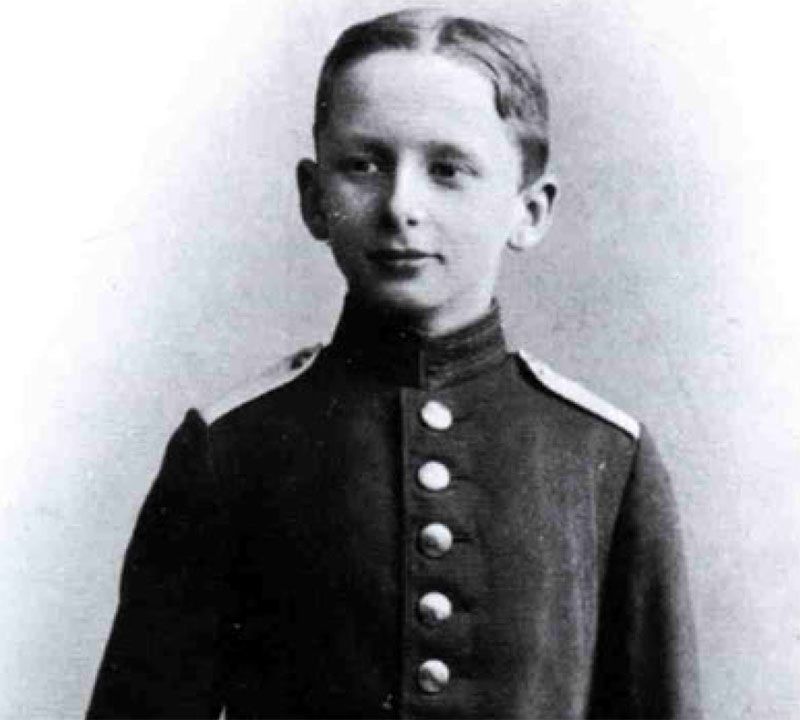
However, as Germany's resources depleted over the course of six years of intense warfare, Manstein's style of warfare gradually lost its relevance. As the war began to turn against Germany, Hitler compelled his armies to defend territorial objectives he considered crucial for political or economic resources, a decision that effectively bound his commanders. Manstein, unable to execute a true Bewegungskrieg, resorted to trading space for time.
After the war, Manstein was one of the first German commanders to write his memoirs, which he used to develop his reputation as “Hitler's most brilliant general." In fact, Manstein's skills were not unique, and the Wehrmacht had other skilled practitioners of Bewegungskrieg. Yet there is little doubt that Manstein was one of the most ardent exponents of maneuver warfare in World War II, and his campaigns marked the apogee of the Wehrmacht's operational art.
The Early Years of Erich von Manstein, 1887-1913
The future field marshal was born in Braunfels, Hesse, on 24 November 1887. His father was Prussian artillery officer Generalleutnant Eduard von Lewinski (1829–1906), and his mother was Helene von Sperling (1847–19010). Erich was the couple's tenth offspring, and Helene had reached an agreement with her sister Hedwig and her husband, Oberst Georg von Manstein (1844-1913), to permit them to rear their newborn, as they had no male heirs to perpetuate the family name.
The Lewinskis, Sperlings, and Mansteins connected Erich to at least five Prussian generals, steeping him in Prussian military traditions from the start. Both of Erich's grandfathers were generals, one of whom, General Albrecht von Manstein, commanded IX Armeekorps during the Franco-Prussian War. Gertrud, one of his mother's sisters, wed Paul von Hindenburg, thereby making the future Generalfeldmarschall and president of Germany, Erich's uncle.
Erich commenced his formal education at the age of seven, enrolling in the Lycee in Strasburg, where he remained for the subsequent five years. Erich, then 13 years old, enrolled in the Kadettenanstalt (cadet school) in Plon, Schleswig-Holstein in 1900. During this time, Erich was also a member of the Corps of Pages, necessitating his service at Kaiser Wilhelm's court during the winter recesses.
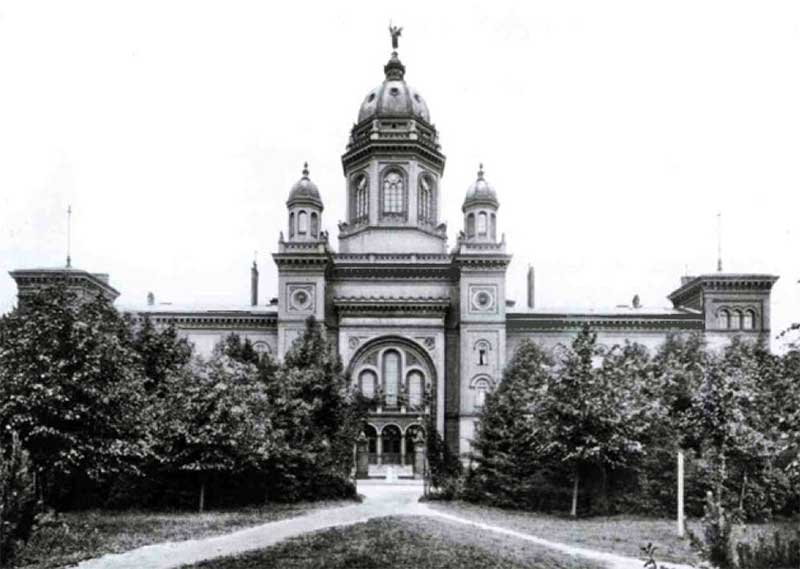
In 1902, Erich attended the Preußische Hauptkadettenanstalt in Gross Lichterfelde, the principal training institution for Prussian officers, located in the southwestern suburbs of Berlin. He received his appointment as a Fähnrich (ensign) in the infantry on 6 March 1906. He subsequently enrolled in the Konigliche Kriegsschule (royal military academy) at Schloss Engers on the Rhine, near Koblenz, for advanced training.
Manstein joined the 3. Garde-Regiment zu Fuß, the former regiment of Hindenburg, as a newly commissioned infantry officer. People perceived this regiment as a ceremonial unit where aristocrats could earn military honors. Erich served in the regiment as a junior officer for eight years. In 1913, the regiment dispatched him to the Kriegsakademie, positioning him for a potential trajectory toward the esteemed GroBer Generalstab. Before Manstein could finish the course, a crisis in the Balkans intensified into a significant European conflict.
The Military Life of Erich von Manstein 1914-43
World War I, 1914-18
Upon the onset of World War I in August 1914, Leutnant von Manstein was appointed as adjutant of the 2. Garde-Reserve-Regiment, initially serving in Belgium before being reassigned with his unit to East Prussia, where he experienced his inaugural engagement against the Russians. Manstein participated in the advance on Warsaw in October 1914, but Russian counterattacks compelled the outnumbered German forces to withdraw. During the retreat, Manstein sustained injuries near Kattowice, west of Krakow.
Following a six-month recuperation in Wiesbaden, he returned in 1915 to function as a junior staff officer, initially in Poland and subsequently in Serbia. Manstein received the Eisernes Kreuz 1. Klasse (Iron Cross, 1st Class) for his performance in the Serbian Campaign. In April 1916, they reassigned Manstein to France, where he served as a staff officer in the Verdun sector and later in the Somme sector. In October 1917, despite not having received formal training as a Generalstab officer, Manstein secured a position as a division-level operations officer, a role he held throughout the war.
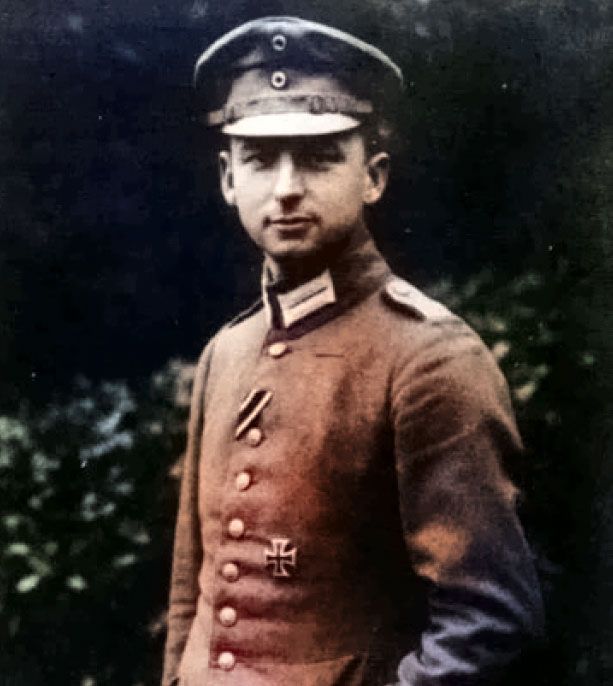
Despite being an infantry officer, Manstein did not command any troops throughout the entire war, which was rather unusual for a company-grade officer. Furthermore, the majority of his staff assignments remained peripheral until the later stages of the war. In contrast to his peers who survived and ascended to senior officer positions in the Wehrmacht, Manstein did not possess an illustrious military career; however, he garnered acknowledgment as a competent and industrious staff officer, securing his place in the post-war Reichswehr.
Service in the Reichswehr, 1919-35
Following the signing of the Armistice and the eruption of revolutionary upheaval in Berlin, the Imperial Army commenced its disintegration, prompting Manstein to engage in efforts to salvage valuable remnants from the ensuing chaos. In February 1919, the Treaty of Versailles dispatched Manstein to Breslau to work with General der Infanterie “Fritz” von Loßberg in organizing the post-war Reichswehr, limited to a mere 100,000 personnel. Loßberg was an accomplished Generalstab officer and quickly emerged as one of Manstein's most esteemed mentors.
In January 1920, during his New Year's holiday, the 32-year-old Manstein returned to Silesia, where he encountered the 19-year-old Jutta Sybille von Loesch. Three days later, he unexpectedly proposed, and on 10 June 1920, they tied the knot. Jutta hailed from a prosperous aristocratic family in Silesia, residing merely 2 kilometers (1 mile) from the newly established border with Poland, and consequently, they had forfeited a significant portion of their land because of the Treaty of Versailles. Manstein acclimated to married life, and a daughter, Gisela, was born in April 1921.
In October 1921, after 15 years in the infantry, Manstein received his inaugural troop assignment: command of the 6th Company of Infantry Regiment 5 in Angermünde, northeast of Berlin. During his time in Angermiinde, his first son, Gero, was born in December 1922.
Following two years as a company commander, Manstein resumed staff responsibilities. Following the Treaty of Versailles, which dismantled Germany's Generalstab and mandated the closure of its Kriegsakademie, the Reichswehr endeavored to circumvent these limitations by educating a new cadre of professional German officers through small study groups. Manstein was among the fortunate few selected for these groups, marking a pivotal phase in the evolution of his military theories.
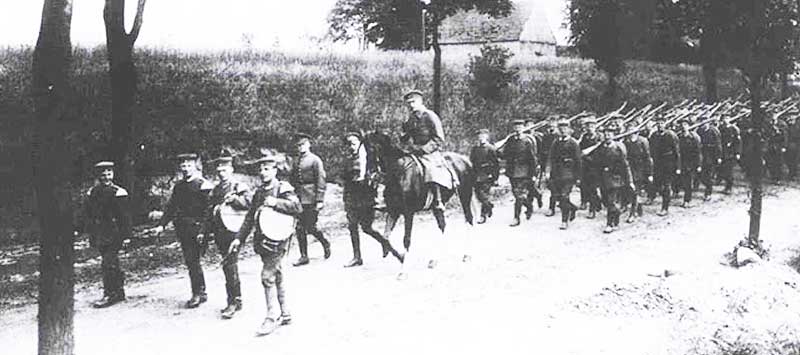
Generaloberst Hans von Seeckt instructed Reichswehr officers to thoroughly analyze wartime operations to recondition the German army for contemporary warfare. These studies resulted in the formulation of a novel doctrine that modernized the established traditions of Bewegungskrieg by incorporating infantry infiltration tactics, armored vehicles, aviation, chemical warfare, and mechanization. Seeckt constructed the Reichswehr for offensive maneuver warfare, in contrast to the defensive force the Allies had anticipated at Versailles.
In 1928, Manstein was elevated to the rank of Major, and in October 1929, he was appointed to the Truppenamt (troop office), T1 section (operations and planning), which surreptitiously integrated the responsibilities of the former Generalstab under the pretense of an administrative entity. The Truppenamt tasked Manstein with formulating mobilization strategies and conducting research on weaponry advancements. Manstein excelled in a challenging intellectual milieu and approached these responsibilities with considerable enthusiasm. In April 1931, the Truppenamt elevated Manstein to the rank of Oberstleutnant in recognition of his contributions. While at the Truppenamt, Manstein's family expanded with the birth of his son, Rudiger.
In the summer of 1931, Oberstleutnant Manstein accompanied the newly appointed head of the Truppenamt on a visit to the Soviet Union. Since 1922, Germany has been covertly engaging in military training and weapons development within the Soviet Union to circumvent the restrictions imposed by the Versailles Treaty. Manstein visited the Panzer training unit in Kazan and toured Soviet military installations in Moscow, Kiev, and Kharkov.
In October 1932, Manstein had to secure a command position to advance his career and subsequently assumed leadership of II Jager Bataillon of 4. Preußen-Infanterie-Regiment in Kolberg. Manstein valued his 16 months with the battalion and subsequently described this period as one of the finest years of his career. Manstein was in Kolberg when Adolf Hitler assumed the position of Reichskanzler in January 1933, and he began to observe the impact of the Nazi regime's new military policies. Soon, Adolf Hitler mandated all German military personnel, including Manstein, to take the new service oath (the Führereid), committing them to personal loyalty to him.
Wehrmacht Service, 1935-39
Hitler promptly initiated reforms in the German military to facilitate rapid expansion to 36 divisions, commencing with the reinstatement of conscription in March 1935. Hitler brazenly contravened the Versailles stipulations by reinstating the prohibited Generalstab within the Oberkommando des Heeres (OKH). The reestablished Generalstab des Heeres appointed Oberst von Manstein to oversee the operations branch in July. Generaloberst Werner von Fritsch was the inaugural chief of the OKH and General der Artillerie. Ludwig Beck assumed the position of chief of the General Staff. Manstein's task was to compose the Wehrmacht's initial war strategy for conflict against either France or Czechoslovakia. He authored Fall Rot (Case Red) to provide Germany a viable opportunity to defend the Ruhr and advised Beck to initiate a significant fortification construction program along the French border.
Generalmajor Oswald Lutz and his vocal chief of staff, Oberst Heinz Guderian, who advocated for an autonomous Panzer division, led Manstein and Beck into a doctrinal conflict. Beck exhibited scant patience for Guderian, remarking, “You proceed too swiftly for my comprehension." Mirroring his superior, Manstein perceived Guderian as nothing more than a "technician." In lieu of Guderian's Panzer divisions, Manstein composed a memorandum to Beck proposing the creation of Sturmartellerie equipped with 75mm howitzers mounted on tank hulls to deliver direct fire support to infantry divisions. He suggested outfitting each infantry division with a battalion of assault guns by 1940.
Artilleryman Beck deemed the subordination of these units to the artillery branch more favorable than an autonomous Panzer branch. Manstein's proposal to establish Sturmartellerie units ultimately led to the development of assault guns, which were crucial in World War II. Nonetheless, the offensive strategies proposed by Lutz and Guderian received Hitler's endorsement, prompting the OKH to establish the initial three Panzer divisions, while the advancement of assault guns remained stagnant.
Most senior Wehrmacht generals, including Beck, Fritsch, and Rundstedt, endorsed the rearmament initiative initiated by Hitler and supported minor conflicts to ultimately “rectify” the borders with Poland and Czechoslovakia; however, they expressed concerns about instigating a war with a major power prior to the Wehrmacht's preparedness. Manstein authored Operation Plan Winterübung (Winter Exercise) to reoccupy the Rhineland, which ultimately resulted in a political victory for Hitler due to the British and French's inaction.
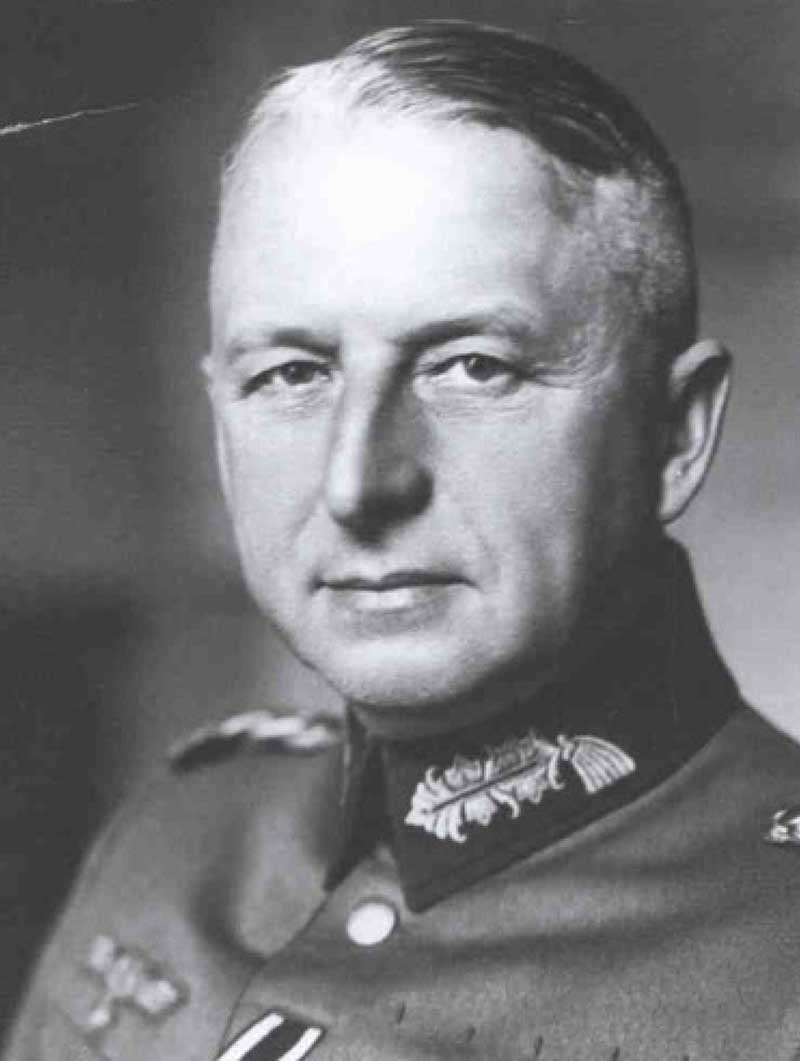
In October 1936, Beck promoted Manstein to the rank of Generalmajor and appointed him as Oberquartiermeister I, acting as his deputy. As the second highest official in the General Staff, Manstein actively participated in the rapid expansion and restructuring of the Wehrmacht. In June 1937, Hitler's belligerent ambitions were evident as he instructed the OKH to devise strategies for a covert assault on Czechoslovakia. Manstein was a principal contributor to the initial formulation of Fall Grün (Case Green) and Sonderfall Otto (Special Plan Otto) for the annexation of Austria.
Manstein's intimate personal connections with Beck and Fritsch entangled him in the escalating conflict between the emerging Nazi leadership and the conventional military command for dominance over the army, culminating in the Blomberg-Fritsch scandals of 1938. Following the resignation of both officers, Beck faced mounting pressure to resign due to his increasing criticisms of the Nazi regime, ultimately leading to his replacement by General der Artillerie Franz Halder. During this restructuring, the General Staff dismissed Manstein and assigned him to command the 18th Infantry Division in Liegnitz. As a close protégé of Beck, Manstein was fortunate to continue active service in the Wehrmacht. Manstein was displeased by the sudden humiliation of Beck and Fritsch, whom he respected, yet he refrained from any public censure that could jeopardize his military career.
Manstein's 18th Infantry Division was one of 11 new divisions established in 1934, and when Manstein assumed command from Generalleutnant Hermann Hoth, it remained unfinished. Manstein expressed relief at escaping the political machinations in Berlin and, upon his promotion to Generalleutnant, remarked that “it was a joy to lead this division." However, he had limited time to prepare his division before the Sudetenland Crisis intensified in the summer of 1938, prompting Hitler to instruct the OKH to prepare for the execution of Fall Grün on 30 September. Generaloberst Ritter von Leeb's AOK 2 allocated Manstein's division for a calculated attack on the formidable Czech border fortifications. Nevertheless, the British and French politicians capitulated at the Munich Conference immediately prior to X-Day, conceding the Sudetenland to Hitler effortlessly.
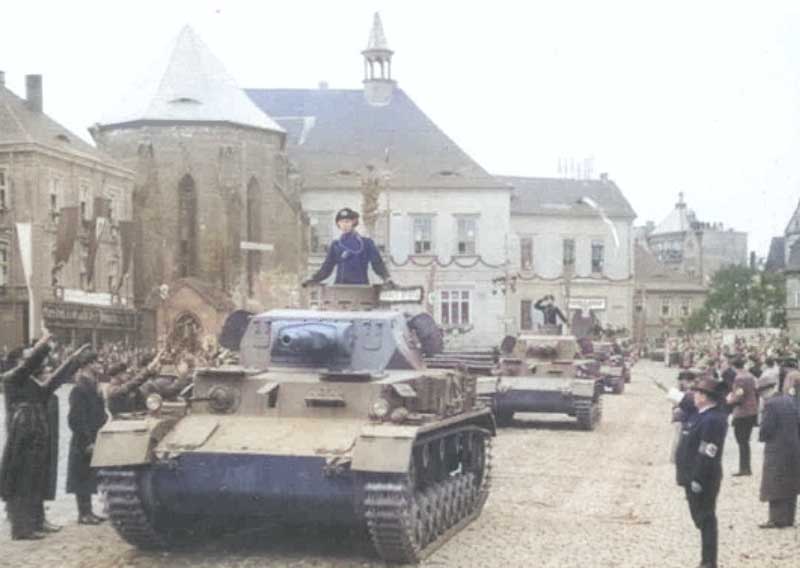
After serving a brief period of occupation duty in Czechoslovakia, Generaloberst Gerd von Rundstedt instructed Manstein to report to his headquarters, located in a monastery at Neisse. Generaloberst Gerd von Rundstedt informed Manstein of his appointment as chief of staff for Heeresgruppe Süd in Fall Weiβ (Case White), the impending invasion of Poland. Manstein was pleased to collaborate with Rundstedt, whom he perceived as a traditional, courtly gentleman, while the operations officer was Oberst Gunther Blumentritt, one of Manstein's few intimate friends. They collaborated to execute the deployment plan. Heeresgruppe Süd received orders to invade Poland on 1 September at 0445 hours due to the lack of diplomatic resolution.
World War II - Poland 1939
As chief of staff of Heeresgruppe Sud, Generalleutnant von Manstein was well-positioned to witness the emergence of the new German operational warfare strategy known as blitzkrieg. Located in his monastery more than 80 km (50 miles) behind the front line, he communicated via telephone with the three subordinate armies. Moreover, he was employed in an office setting, and in his memoirs, the sole difficulty he noted was that the sausage served in their officers' mess was tough to chew. Manstein's memoirs clearly indicate that he deemed an assault on Poland warranted and endorsed Nazi assertions of Polish “aggression”. Manstein's responsibility was to synchronize the three subordinate armies during the initial phase of the invasion, which swiftly penetrated the Polish border defenses and advanced toward Warsaw.
Two weeks following the conclusion of the Polish campaign, Rundstedt's headquarters received orders to relocate westward for operations against the Anglo-French forces. On 21 October, Manstein visited the OKH headquarters in Zossen, south of Berlin, to collect the operations order for Fall Gelb (Case Yellow). Subsequently, he advanced to Koblenz, where Rundstedt reclassified his headquarters as Heeresgruppe A and placed it in command of AOK 12 and 16, which were gathering near the Belgian border. Oberstleutnant Henning von Tresckow, a sharp General Staff officer whom Manstein greatly admired, accompanied Blumentritt. The personnel were accommodated in the opulent Hotel Riesen-Fürstenhof, adjacent to the Rhine.
World War II - Sichelschnitt and the French Campaign
Hitler was resolute in his intention to promptly assault the Anglo-French allies following the invasion of Poland; however, his prior assurances to the Generalstab that the Allies would not intervene on behalf of Poland prevented him from formulating an offensive strategy for the west. However, the declaration of war by Britain and France compelled the OKH to formulate a plan within less than a month.
Confronted with time constraints and expecting that Hitler would abort the offensive upon recognizing the Wehrmacht's unpreparedness, Halder revived the Schlieffen Plan from 1914, incorporating Panzers and Luftwaffe support. Similar to the Fall Gelb strategy of 1914, Halder positioned the German Schwerpunkt on the right flank in Belgium, but this time he also planned to invade the Netherlands. According to Halder's strategy, Generaloberst Fedor von Back's Heeresgruppe B, comprising three armies and six of the ten Panzer divisions, would advance towards Brussels and drive the Allied forces back to the Channel coast near Dunkirk. Rundstedt's Army Group A, comprising two armies and one Panzer division, would conduct a supporting offensive through the Ardennes toward Sedan. On 29 October, Halder released a revised version of the plan that designated all armor for the advance on Brussels.
Rundstedt, Manstein, and Blumentritt quickly recognized that the plan did not adhere to the traditional Generalstab principles of Bewegungskrieg and would not enable decisive Kesselschlachten (encirclement battles). Manstein primarily opposed the German principal offensive towards Belgium, believing the Allies would anticipate this strategy. Halder's strategy predicted that Manstein would launch a significant frontal attack against the strong Allied resistance in Belgium, leading to an attrition battle that Germany was unlikely to win.
With Rundstedt's endorsement, Manstein composed a memorandum to the OKH proposing an alternative maneuver strategy that he asserted provided superior chances of success compared to the existing plan. Manstein said that the Wehrmacht had to use operational-level surprise to beat the roughly similar Allied forces. This meant attacking the enemy when they were least expecting it, which helped the Germans do their best at maneuver warfare. He contended that positioning the Schwerpunkt centrally with Heeresgruppe A would achieve this, and that deploying four Panzer divisions through the Ardennes Forest to cross the Meuse River at Sedan would achieve that surprise.
Upon achieving a breakthrough, the Panzer units would execute a Sichelschnitt (“sickle-cut”) envelopment to access the Channel coast, thereby encircling the principal Allied forces in Belgium, followed by a subsequent "sickle-cut" maneuver southward towards Dijon to isolate the French troops positioned along the Maginot Line. Manstein's concept epitomized a quintessential Generalstab strategy, employing surprise, concentration, and maneuver to attain decisive outcomes. Manstein authored six memos regarding his strategy to OKH during the winter of 1939–40 but received no response. Halder, who opposed Manstein's attempts to sway OKH planning, ensured that Hitler was not privy to any of these memoranda. General Heinz Guderian, a Panzer specialist based in Koblenz during the autumn of 1939, further enhanced Manstein's concept.
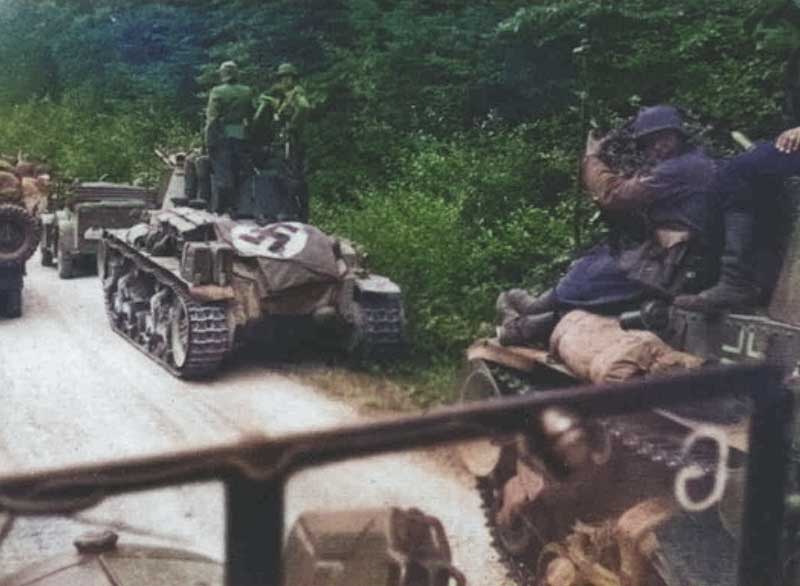
Halder was infuriated by Manstein's persistent stream of memos and resolved to suppress him by transferring him on 27 January 1940 to command the newly established XXXVIII Armeekorps (AK) in Stettin. A third iteration of Fall Gelb was released on 30 January 1940, designating two Panzer divisions to Heeresgruppe A while now incorporating a total of three Schwerpunkts, thereby dispersing the German armor across an extensive front. Halder anticipated that Heeresgruppe A would not establish a bridgehead at Sedan until Day 10 of the offensive, and did not assign Guderian's XIX AK (mot.) to conduct any independent deep penetration.
Nevertheless, certain protégés of Manstein succeeded in divulging specifics of his alternative strategy to personnel within Hitler's administration. At this juncture, Hitler was dissatisfied with Halder's strategy, as it would probably result in a prolonged war of attrition with the Allies, which he sought to evade. He developed a keen interest in the Sedan region, which appeared to provide a more advantageous route into northeastern France than via Belgium. The Führer summoned Manstein and six other high-ranking commanders to breakfast in Berlin on 17 February 1940, after which Hitler privately sought their opinions on Fall Gelb. Following a briefing by Manstein regarding his strategy, Hitler resolved to implement this new maneuver and instructed the OKH to release a revised Fall Gelb. The revised strategy augmented Heeresgruppe A from 24 to 44 divisions, incorporating the newly established Panzergruppe Kleist, which comprised five Panzer divisions equipped with 1,222 tanks.
Manstein could relish his triumph, albeit from afar. When Fall Gelb commenced on 10 May 1940, he was situated 700 km (435 miles) away in Liegnitz, and he recorded in his diary, “It has begun, and I am at home." However, Rundstedt promptly instructed his corps to relocate westward by train to reinforce the second-echelon forces; upon his arrival at Rundstedt's new headquarters in Bastogne, the German Panzers had already secured a decisive breakthrough at Sedan and were advancing towards the coast. Manstein's corps required time to advance from Belgium to the Somme, and it was not until 27 May that his forces reached the vicinity of Amiens to assume control of a 48 km (30-mile) segment of the river line. Kluge's Army Group 4 assigned Manstein's corps to secure the bridgeheads at Abbeville and Amiens. Manstein was eager to expand the bridgeheads; however, Kluge instructed him to maintain a defensive posture until additional German forces arrived at the Somme.
After Heeresgruppe A eradicated the encircled Allied forces at Dunkirk, its Panzers advanced southward to conclude the campaign in France. Fall Rot (Case Red), the second phase of the German offensive in the west, commenced with a multi-corps assault across the Somme River on the morning of 5 June. Manstein's XXXVIII Army Corps launched an assault with two infantry divisions, successfully repelling two French divisions. Following two days of combat, the French retreated, prompting Manstein to initiate a pursuit that successfully achieved a crossing over the Seine at Vernon on 9 June and reached the Loire River by 19 June. Despite minimal combat, his corps advanced 480 kilometers (300 miles) on foot in just 17 days.
Manstein's involvement in the French campaign was brief yet effective, resulting in his promotion to General der Infanterie and the conferment of the Ritterkreuz des Eisernen Kreuzes. His revision of Fall Gelb indirectly helped the Germans achieve total surprise and take control of the entire campaign. While others, including Hitler, played a role in the final plan, it was Manstein's operational concept that established the foundation for the most significant military triumph ever attained by German forces.
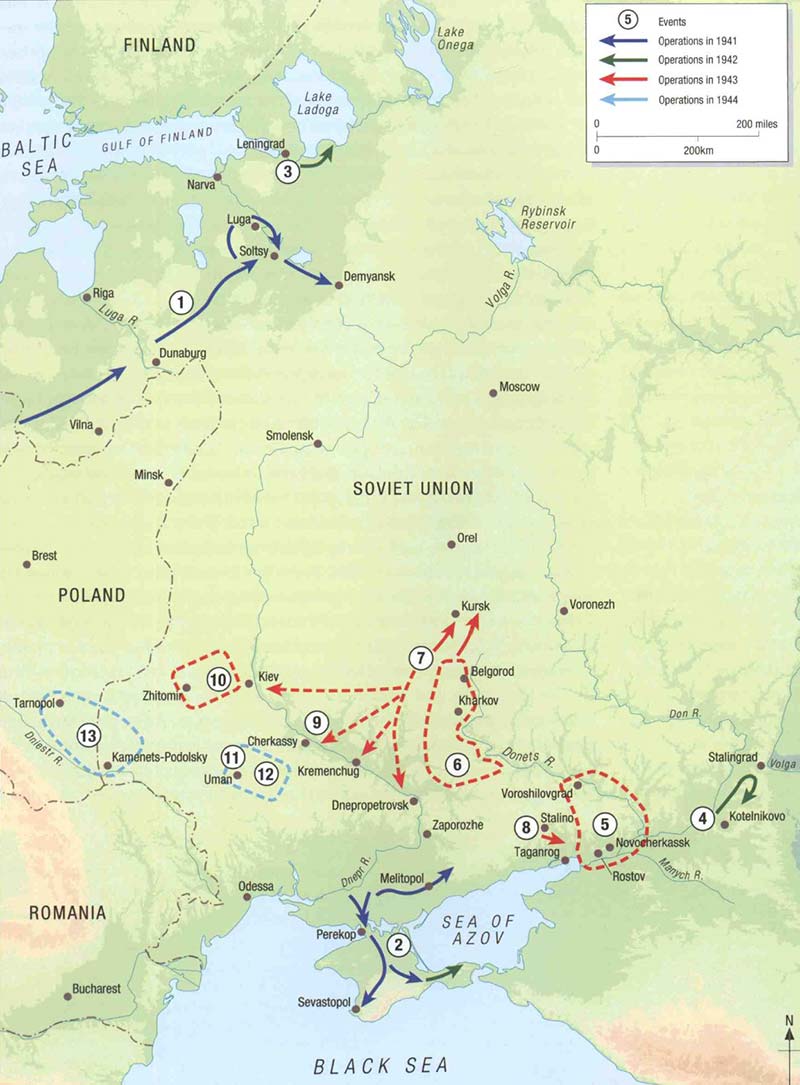
- From 22 to 26 June 1941, Manstein's LVI Armeekorps (mot.) progressed to Daugavpils, subsequently to Pskov, and then shifted eastward to encircle Soviet defenses near Luga. His corps is redirected toward Demyansk.
- Commanding AOK 11, Manstein breaches the Perekop Peninsula (24 September 1941) prior to vanquishing a Soviet counteroffensive along the Sea of Azov. AOK 11 subsequently occupies the majority of Crimea (1-14 November) before decisively defeating Soviet forces at Sevastopol and in the Kerch Peninsula by 4 July 1942.
- From 10 September to 1 October 1942, Manstein's Army Group 11, reassigned to the Leningrad front, successfully thwarts the Soviet attempt to lift the siege and encircles a segment of the 2nd Shock Army.
- In November 1942, as commander of Heeresgruppe Don, Manstein executes Operation Wintergewitter from December 12 to 19 in an attempt to relieve the Stalingrad pocket; however, the endeavor is unsuccessful.
- Manstein orchestrates a defense of the Rostov region with Armeeabteilung HoLLidt to facilitate Heeresgruppe A's withdrawal from the Caucasus, January 1943.
- Manstein's "backhand blow" counteroffensive from February 20 to March 18, 1942, delivered a significant defeat to the Soviet Southwest and Voronezh Fronts, culminating in the recapture of Kharkov.
- During Operation Zitadetle, which took place from 5-15 July 1943, Manstein's Heeresgruppe Sud failed to reach Kursk.
- 30 July to 3 August 1942: Manstein deploys two Panzer corps to eliminate the Soviet incursion across the Mius River.
- Following Vatutin's offensive that breaches his left flank on August 3, Kharkov surrenders on August 22, and the 4th Panzer Army is driven westward.
- On 6 November, Vatutin seizes Kiev. Manstein initiates a significant counteroffensive at Zhitomir from 15 to 25 November and at Radomyshl from 6 to 23 December, yet he fails in reclaiming Kiev or encircling the Soviet armored divisions.
- 24-28 January 1944: Operation Watutin: Manstein launches a counteroffensive against the 1st Tank Army, resulting in considerable casualties.
- 1-17 February 1944: Operation Wanda. Manstein deploys two Panzerkorps to extricate the 56,000 German soldiers encircled in the Korsun Pocket, successfully liberating two-thirds of
- From 28 to 30 March 1944, as a new Soviet offensive encircled the majority of Hube's 1. Panzerarmee, Manstein commenced the organization of a rescue operation but was relieved of command prior to its execution.
World War II - Seelöwe and Barbarossa
Subsequent to the French armistice, XXXVIII AK was relocated to the Boulogne region to strategize for a potential invasion of England. The OKH and the Kriegsmarine formulated the invasion strategy during Operation Seelöwe, which involved transporting Manstein's corps from Boulogne to Beach “D” near Bexhill using 380 barges. Nevertheless, the Luftwaffe did not attain air superiority over the Channel, prompting Hitler to defer the operation. In his memoirs, Manstein characterized the invasion as perilous but asserted that it was the sole strategy that promised potentially decisive outcomes against Great Britain. Following the postponement of Seelöwe, Manstein spent a considerable portion of autumn 1940 either in Paris or on leave at home, as did many of his soldiers. The war appeared virtually secured.
Hitler directed the OKH to formulate an invasion plan for the Soviet Union, but Halder made sure to exclude Manstein from the process. Manstein assumed command of the LVI AK (mot.) headquarters in Bad Salzuflen, a tranquil spa town, in February 1941. On 30 March, Manstein was among 250 senior German officers briefed on Operation Barbarossa. He discovered that his unit would be one of two motorized corps allocated to Generaloberst Erich Hopner's 4th Panzer Group within Generalfeldmarschall Ritter von Leeb's Army Group North.
The alternative motorized unit was the XLI AK (mot.), commanded by General der Panzertruppe Hans George Reinhardt. The aim was to overpower the Soviet troops in the Baltic States and subsequently advance swiftly toward Leningrad, anticipated to capitulate within six to eight weeks. The Führer informed Manstein and other high-ranking commanders two weeks before the invasion aboüut his intention to conduct an extermination campaign in the Soviet Union, including the infamous Kommissar Befehl, which mandated the immediate execution of all captured Soviet political officers.
Manstein's corps, only partially motorized, received appointments to the 8th Panzer Division, 3rd Motorized Infantry Division, and 290th Infantry Division. His corps positioned itself in its assembly area within the woods near Tilsit in late May 1941, and Manstein arrived merely six days prior to the commencement of Barbarossa. Hopner assigned Manstein and Reinhardt the objective of breaching the inadequately defended Soviet border fortifications, encircling any elements of the Soviet 8th Army encountered, and swiftly advancing to secure distinct crossings over the Dvina River.
World War II - Drive on Leningrad
On 22 June 1941 at 0300 hours, Manstein launched an assault across the Nieman River, utilizing his 8th Panzer Division and 290th Infantry Division. The assault targeted the inadequately defended frontier between the Soviet 8th and 11th Armies, with the 8th Panzer Division advancing 70 kilometers (44 miles) on the initial day. Unbeknownst to Manstein, a contingent of the Soviet 3rd Mechanized Corps launched an assault on the flank of the 4th Panzergruppe, bypassing Manstein's spearheads and initiating a significant tank confrontation with Reinhardt's corps near Raseiniai.
As Reinhardt engaged the Soviet armor, Manstein's corps proceeded with its swift advance toward the Dvina River via the Dvinsk Highway, encountering minimal resistance. The leading Kampfgruppe of the 8. Panzer-Division, along with a company of Brandenburg troops in Soviet uniforms, captured both the road and railway bridges over the Dvina at Daugavpils intact on the morning of 26 June, after a 315 km (196 miles) advance in 100 hours. Manstein's rapid advance through Lithuania achieved the Panzergruppe's interim objective with merely 365 casualties incurred.
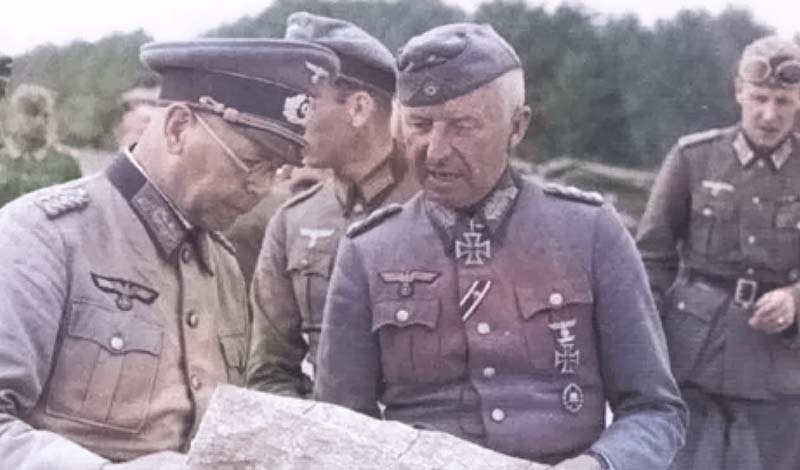
The German bridgehead faced uncertainty, as Manstein was 100 km (62 miles) ahead of the rest of Heeresgruppe Nord, and it took an additional two days for his infantry to reach the bridgehead. The swift progression had depleted 5.5 VS (Verbrauchssatz) of fuel (equivalent to 545 tons of gasoline), rendering his spearhead nearly immobilized. Devoid of previous direct experience in armored force logistics, Manstein propelled his corps forward at full velocity until it depleted its fuel reserves and faced overwhelming challenges for immediate resupply. Manstein's advance inflicted minimal harm on the Soviet 8th and 11th Armies, as his corps captured fewer than 5,000 prisoners in the initial fortnight of the offensive, and no significant units were overrun or encircled.
The Soviets were resolute in their efforts to reclaim the bridges over the Dvina and relentlessly targeted Manstein's corps with tactical bomber assaults. On the morning of 28 June, the Soviet 21st Mechanized Corps, commanded by General-Major Dmitri Lelyushenko, assaulted Manstein's bridgehead utilizing 60 BT-7 light tanks and multiple battalions of motorized infantry. Lelyushenko was a highly experienced and tactically astute commander; for the first time, Manstein faced a formidable adversary. Manstein's isolated, fuel-depleted corps faced significant pressure from the Soviet counteroffensive; however, Lelyushenko's corps was in a more dire condition, compelled to disengage and retreat northward after depleting most of his tanks.
After the rest of Heeresgruppe Nord arrived at the Dvina River, they resupplied Manstein's corps and assigned the SS-Division "Totenkopf" to pursue Lelyushenko's forces. Nonetheless, Manstein's advance was lethargic, while Reinhardt achieved more significant progress towards Leningrad, seizing Pskov on 8 July. Upon seizing Pskov, Hopner aimed to advance his Panzers across the Luga River prior to the Soviets fortifying a new defensive line. He resolved to execute a traditional pincer maneuver against the Soviet forces concentrated around Luga by dispatching Reinhardt's corps westward to cross the river, while Manstein's army would advance northeast toward Novgorod. Manstein's corps advanced toward Lake Il'men, with the 8th Panzer Division at the forefront. Manstein's forces advanced swiftly and experienced only intermittent contact during the initial days.
Despite the Soviets' urgent efforts to fortify their defenses along the Luga River, Marshal Kliment E. Voroshilov opted to deploy his scarce reserves for a spoiling attack. Observing that the two German motorized corps were excessively distant to offer reciprocal assistance, he commanded the 11th Army to launch a counteroffensive against Manstein's corps near Soltsy. Voroshilov dispatched his chief of staff, Nikolai Vatutin, to coordinate the counteroffensive.
The 8th Panzer Division, without any flank protection, positioned itself along the primary road east of Soltsy on the morning of 15 July. Manstein positioned his corps command post west of Soltsy and the 3rd Motorized Infantry Division even further to the rear. Unbeknownst to Manstein, General Major Ivan Lazarev had mobilized two fully equipped units (the 21st Tank Division and the 70th Rifle Division) in the forests north of Soltsy, while three undersized rifle divisions from the 22nd Rifle Corps were congregating south of Soltsy. Vatutin commanded these two units to execute a synchronized pincer maneuver to sever the primary route behind the Germans.
Consequently, it was a significant surprise when the 8. Panzer Division was assailed vigorously on its left flank by numerous enemy infantry, bolstered by over 100 T-26 light tanks, substantial artillery, and even some aerial support. As the 8th Panzer Division retreated towards Soltsy, the southern assault group cut off the road behind Soltsy, resulting in the encirclement of the 8th Panzer Division. Desperate, Manstein ordered the 8th Panzer Division to break free from the encirclement and arranged for limited aerial resupply. After two days of intense combat, the 8th Panzer Division successfully emerged from the encirclement; however, its severe damage necessitated its withdrawal into reserve for refurbishment, leaving Manstein without armored support. Ultimately, Hopner dispatched reinforcements, leading the fatigued Soviet assault units to abandon the counteroffensive. As a result of Vatutin's counteroffensive, Manstein could not accomplish his objective of penetrating the Luga line, marking the battle of Soltsy as his initial defeat.

In June 1941, a Soviet KV-2 heavy tank became stranded in Lithuania. These tanks constituted a significant shock to the Panzer troops. Manstein's swift advance to Diinaburg resulted in his avoidance of a direct confrontation with these formidable forces, leaving Reinhardt's corps to engage the Soviet armor independently. (Bundesarchiv, Image 1011-209-0091-11)
Right:
German armor was progressing along a forest path towards Leningrad. The Soviet counteroffensive at Soltsy on 15 July 1941 ensnared Manstein's corps along these types of roads. (Bundesarchiv, Image 101I-209-0074-16A)
Following Soltsy, Manstein's command was diminished to merely one division for a fortnight; however, in early August, he was allocated two additional infantry divisions to launch frontal assaults on the primary Soviet defenses surrounding Luga, while Reinhardt's Panzers carried out a singular envelopment from their bridgehead. The Soviet resistance was intense, yet Manstein was close to connecting with Reinhardt's Panzers when Marshal Voroshilov opted to thwart German operations with a counteroffensive.
On 12 August, the Soviet 11th and 34th Armies launched an assault with ten divisions against the three divisions of the German X AK in Staraya Russa. This was essentially a reiteration of the Soltsy counteroffensive, albeit on a grander scale, and within three days, the Soviets had encircled X AK, creating a significant predicament for Heeresgruppe Nord. Due to Reinhardt's Panzers being too distant to assist, Leeb opted to deploy Manstein's corps for a relief operation. Manstein was assigned the SS-Division “Totenkopf” and the 3rd Motorized Infantry Division to execute a two-division pincer assault against General-Major Kuzma M. Kachanov's 34th Army on August 19. The Luftwaffe's close air support facilitated Manstein's offensive, enabling swift advancement; he not only restored ground communications with X AK but also encircled components of five Soviet divisions. Manstein asserted that his corps apprehended 12,000 prisoners within the Kessel, and it is indisputable that he dealt a significant defeat to Kachanov, who subsequently faced execution for his shortcomings.
Notwithstanding success at Staraya Russa, Leeb opted to reassign Manstein's corps to bolster AOK 16's advance eastward toward Demyansk, owing to escalating Soviet operations in this area. Manstein received notification of his appointment as commander of AOK 11 within Heeresgruppe Süd on 12 September, near Demyansk, and departed the following day.
As a corps commander, Manstein exhibited aggressive leadership and a profound comprehension of Bewegungskrieg to attain operational-level success. Nevertheless, he completed fewer missions than his counterpart Reinhardt, and his corps had a Panzer division assigned approximately half of the time. Throughout the majority of the 12-week campaign against Leningrad, he was primarily commanding infantry units. Manstein's operations in Lithuania and Latvia demonstrated that he still had much to learn regarding mechanized force logistics and accurately identifying restricted terrain. The unexpected event at Soltsy suggests that Manstein failed to foresee enemy maneuvers, a misjudgment he would replicate subsequently.
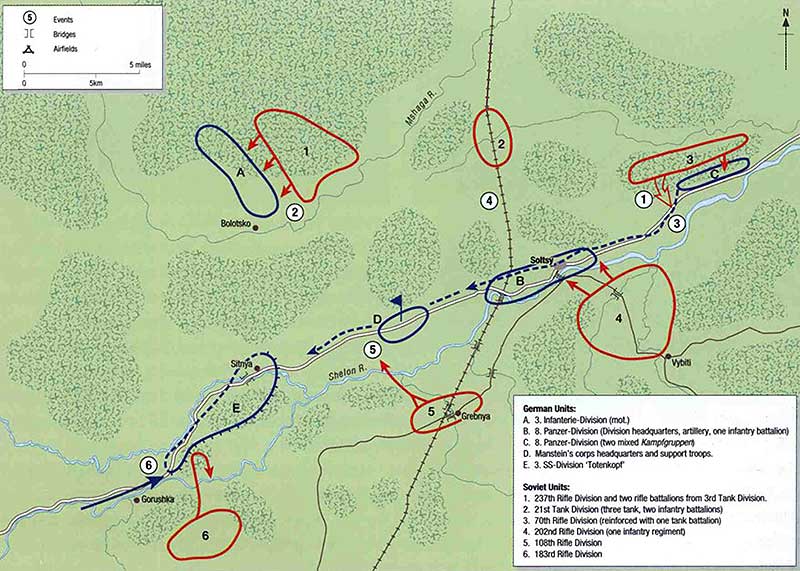
- On the morning of 15 July, the 70th Rifle Division launched an assault and captured the road situated behind the advance of the 8th Panzer Division.
- The 237th Rifle Division initiates several assaults on the German 3. Infanterie Division (mot), obstructing its assistance to the 8. Panzer Division.
- On 15-16 July, the vanguard of the 8th Panzer Division successfully extricates itself from encirclement and retreats westward to Soltsy.
- On 16 July, the Soviet 21st Tank Division launched an assault, posing a threat to sever the road west of Soltsy, while the understrength 202nd Rifle Division advanced on Soltsy from the south. The 8th Panzer Division retreats from Soltsy, encircled on three sides.
- On July 17, the Soviet XXII Rifle Corps, which includes the 180th and 183rd Rifle Divisions, launches an assault to cut off the main route to Soltsy, while the 8th Panzer Division continues its westward retreat.
- On July 18, the 3rd SS Division "Totenkopf" arrives and clears the route to facilitate the battered 8th Panzer Division's movement into reserve. Manstein reinstates a new corps front line near Sitnya.
World War II - Conquest of the Crimea 1941-42
Manstein arrived at the AOK 11 headquarters in Nikolyaev on 17 September, immediately following the formation's crossing of the Dnepr River at Berislav. At this juncture, AOK 11 comprised the XLIX Gebirgs-Armeekorps, XXX AK, and LIV AK, totaling nine German divisions, along with the attached 3rd Romanian Army. General Field Marshal Gerd von Rundstedt, commander of Army Group South, tasked Army Group 11 with two objectives following the Dnepr crossing: to pursue the retreating Soviet forces eastward to Rostov and to capture Crimea.
At first, Manstein tried to accomplish both goals, but this resulted in his forces being dispersed in different directions. He dispatched General der Kavallerie Erik Hansen's LIV AK, comprising three divisions, to secure an entry to Crimea by seizing the Perekop Isthmus, while the remainder of his forces progressed towards Melitopol. Hansen devoted six days to forcefully advancing through the 8km-wide (5-mile) neck of the Perekop Isthmus until the 51st Army commenced a chaotic retreat. However, a Soviet counteroffensive near Melitopol thwarted Manstein's aspirations to capitalize on this achievement by overwhelming a Romanian brigade. The Soviet counteroffensive near Melitopol compelled Manstein to deploy the SS-Division (mot.) “Leibstandarte SS Adolf Hitler” to rectify the situation in the east, thereby depriving him of any reserve units to build on the success at Perekop. He initiated offensive assaults on the Soviet 9th and 18th Armies, while Kleist's 1st Panzer Group encircled the beleaguered Red Army divisions from the north, confining them against the Sea of Azov by 7 October.
After the battle of the Sea of Azov, Rundstedt diminished Manstein's AOK 11 to six German infantry divisions and the Romanians, permitting him to concentrate solely on the Crimea. The Soviet 51st Army, holding fortified positions near Ishun at the southern extremity of the Perekop Isthmus, significantly outnumbered Hansen's corps. A significant battle commenced on 18 October and persisted for ten days as the Germans gradually penetrated the Soviet defenses. As Soviet troops commenced their retreat into the interior of Crimea, Manstein initiated a vigorous pursuit utilizing improvised motorized columns, Romanian cavalry, and rapidly advancing infantry, which kept the enemy in a state of disarray.
German forces entered Simferopol on November 1, where Manstein established his new headquarters, and Kerch was captured on November 16. The Soviet Navy constructed rapid land defenses surrounding the fortress of Sevastopol, yet Manstein aimed to capture it prior to the arrival of reinforcements by sea. On 10 November, he attempted a probing assault that was unsuccessful due to insufficient heavy artillery and aerial support. Manstein, accepting the siege, commanded XXX and LIV AK to encircle the city, while the recently allocated XLII AK and the Romanians secured the eastern coastline of Crimea.
As of early December 1941, Manstein's AOK 11 in the Crimea was the sole Wehrmacht unit continuing its offensive on the Eastern Front. Manstein's supply situation was inadequate, and he possessed minimal artillery or air support to execute a calculated assault on a fortified zone. Nonetheless, he initiated a six-division offensive against Sevastopol on 17 December, which made some progress but failed in capturing the city. Following AOK 11's 8,500 casualties, Manstein terminated the offensive and commenced a siege. On 26 December, the Soviet 51st Army deployed 5,000 troops at Kerch, followed by the landing of the 44th Army at Feodosiya three days later.
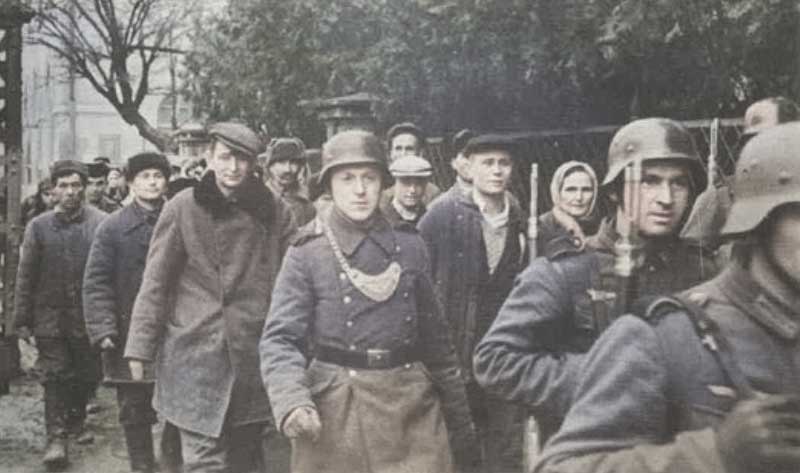
Manstein underestimated the peril posed by Soviet amphibious operations, allocating merely one division from Generalleutnant Hans Graf von Sponeck's XLII AK to defend over 150 km (93 miles) of coastline. Sponeck successfully obliterated the minor Kerch landing; however, the loss of Feodosiya jeopardized his forces' supply lines, prompting him to request Manstein's authorization for withdrawal. Manstein declined the request. Sponeck opted to withdraw independently and executed a 100-kilometer (62-mile) forced march, thereby rescuing his troops from encirclement and subsequently establishing a new front west of Feodosiya that contained the Soviet landings. Despite the avoided disaster, Manstein dismissed Sponeck from command and reported his insubordination to the OKH. Despite receiving the Ritterkreuz, a German court of honor brought Sponeck before them and sentenced him to death; however, Hitler commuted the sentence to six years in the military prison at Germersheim.
Manstein dispatched XXX AK to bolster the surrounded XLII AK and subsequently initiated a remarkable winter counteroffensive on 15 January 1942, which successfully reclaimed Feodosiya and resulted in more than 16,000 Soviet casualties. Nonetheless, AOK 11 had depleted its final resources in reclaiming Feodosiya, and the Stavka utilized the ensuing respite to bolster the newly established Crimean Front under General-Lieutenant Dmitri T. Kozlov.
From February to April 1942, Manstein executed a two-front defensive campaign with significantly inferior resources. The Soviet Black Sea Fleet sent reinforcements and supplies to Sevastopol, mocking German claims of a siege, and General-Major Ivan Petrov's Coastal Army reformed into a formidable force that outnumbered Hansen's besieging contingent. Stalin promptly observed that the combined forces of Petrov and Kozlov surpassed Manstein's AOK 11 by a ratio of two to one, coercing both commanders into initiating hasty offensives. From February to May 1942, Manstein thwarted three Soviet offensives that failed in breaching the AOK-11 siege lines. However, when Heeresgruppe Süd dispatched the 22. Panzer-Division to bolster the Crimea, Manstein employed it in a poorly orchestrated counteroffensive against entrenched Soviet defenses, resulting in the loss of 32 tanks.
This counterattack served as a sobering lesson for Manstein regarding the deployment of Panzers; attempting to penetrate enemy minefields and anti-tank ditches without the support of pioneers, infantry, and artillery was equivalent to suicide. Like numerous German commanders, Manstein had been influenced by the swift victories of 1940–41 to believe that Panzer divisions could independently surmount any opposition; however, he now recognized that effective combined arms tactics were essential to defeat a fortified and resolute adversary.
Following the termination of Kozlov's assaults in April, Manstein traveled to the Wolfsschanze in East Prussia to confer with Hitler and obtain directives for the 1942 campaign. Hitler considered Manstein's operational strategies for addressing Soviet positions and, for a change, granted his commander considerable autonomy on-site. Manstein notified Hitler of his plan to annihilate the Soviet Crimean Front through a surprise offensive in May, designated Operation Trappenjagd (Bustard Hunt). Following the clearance of the Kerch Peninsula, he aimed to consolidate all AOK 11 for a formidable assault on Sevastopol in July, referred to as Operation Storfang (Sturgeon Haul).
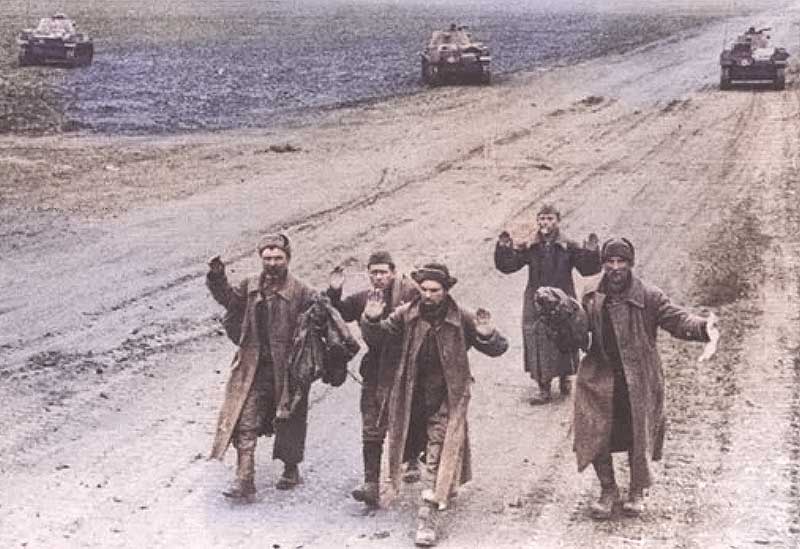
Manstein successfully concentrated five infantry divisions, one Panzer division, and two Romanian divisions against Kozlov's augmented three armies, equivalent to 20 divisions. Kozlov established three defensive lines at the Parpach narrows, positioning his 44th and 51st Armies at the forefront and the 47th Army in reserve. Kozlov believed his position was impregnable due to Manstein's forces being outnumbered two to one and the presence of swamps safeguarding the southern section of the Soviet front. On the morning of 8 May 1942, Manstein initiated one of the most remarkable offensives of World War II. In accordance with the Sichelschnitt plan, Manstein concentrated his Schwerpunkt in the most challenging terrain, assaulting through the swamps to decimate the two front-line divisions of the 44th Army using concentrated artillery and Stuka dive-bombing.
Concurrently, Manstein utilized his clandestine asset—the 902. Sturmboote Kommando—to deploy a bolstered infantry company behind the primary Soviet fortifications. After three hours, Manstein breached the Soviet front and advanced his second echelon forces to widen the gap.
Richthofen's Fliegerkorps VIII, undetected by Soviet intelligence, initiated a succession of destructive assaults that swiftly established air superiority over Crimea. Prior to Kozlov recognizing the magnitude of the threat from the German incursion, Manstein deployed the 22nd Panzer Division on the second day of the offensive, executing a flawless encirclement that trapped the majority of the 51st Army against the Sea of Azov. Subsequently, Manstein rapidly conducted a forced march of infantry and minor motorized units to seize control of the eastern Kerch Peninsula, while the remainder of his forces eliminated the encircled Soviet troops. Following the decimation of his command and the chaotic retreat of the remaining forces towards the port of Kerch, Kozlov ordered an evacuation to the Taman Peninsula, successfully rescuing only 37,000 of his 212,000 troops before Kerch fell on 15 May. Manstein had obliterated three Soviet armies within a mere week, incurring only 3,397 casualties. He could now address Sevastopol without impediment.
Following the fall of Kerch, the Stavka expedited 5,000 reinforcements to Petrov's forces in Sevastopol; however, the Soviets failed to foresee the magnitude and ferocity of Operation Storfang, which commenced on 2 June. Manstein mobilized more than 900 medium and heavy artillery pieces to weaken the defenses through a five-day bombardment, while Fliegerkorps VIII targeted the harbor regions. Following the systematic removal of several Soviet forward positions, Manstein once again employed Hansen's LIV AK as a battering ram, inflicting significant damage to the northern Soviet lines on 7 June. General der Artillerie Maximilian Fretter-Pico tasked the XXX AK with executing a supporting assault on the southern Soviet defenses, but Manstein expressed dissatisfaction with Fretter-Pico's lethargic and uninspired offensives.
Manstein assigned the Romanian Mountain Corps to AOK 11 for Storfang, but he used them to secure the relatively tranquil central sector. Initially, it was evident that Operation Storfang would devolve into a battle of attrition, depleting ammunition and infantry at an extraordinary pace, with victory favoring the side that sustained its combat efficacy the longest. Given that he was assaulting the equivalent of eight heavily fortified enemy divisions with only nine of his own, Manstein maximized the presence of combat multipliers to enhance the efficacy of his offensives. He allocated two pioneer battalions to each assault division to overcome obstacles and secured three assault gun battalions for close support.
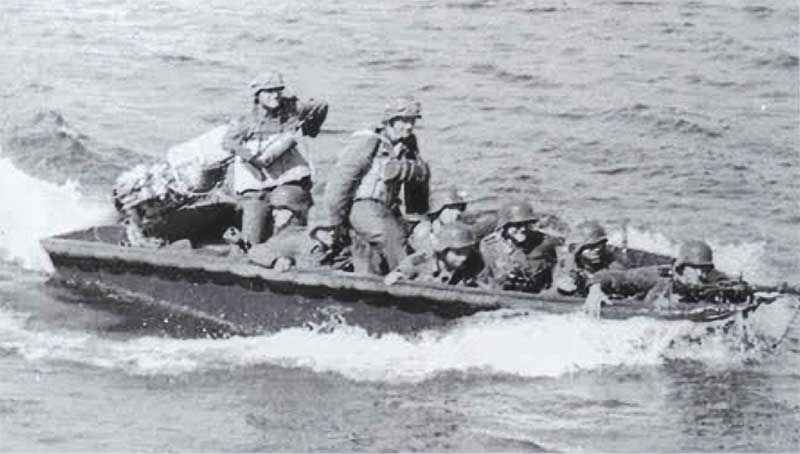
Manstein monitored the initial ground assaults from a concealed observation post; however, he seldom visited the front lines during the offensive due to the ongoing threat from snipers and mortar fire. In contrast to commanders like Erwin Rommel or Heinz Guderian, Manstein was averse to front-line leadership and favored functioning from a stationary command post, where he could optimally coordinate his three corps commanders, artillery, and Richthofen's air support. His rapport with the Romanian corps commander, General-Major Gheorge Avramescu, declined during the campaign as Manstein explicitly expressed his distrust of the Romanian forces. However, despite Manstein's reservations, the Romanian mountain infantry excelled when deployed in the concluding phases of the battle.
By late June, Manstein's AOK 11 had significantly advanced in diminishing Sevastopol, yet his infantry units were severely diminished, a substantial portion of the heavy artillery was depleting its ammunition, and Fliegerkorps VIII was scheduled to relocate north to assist Operation Blau.
Manstein opted to take a risk before his offensive lost momentum; he deployed the 902. Sturmboote Kommando to facilitate Hansen's LIV AK in executing a covert night crossing of Severnaya Bay, while Fretter-Pico's XXX AK launched a nocturnal assault on the Sapun Ridge on 29 June. Both assaults succeeded, fatally undermining the Soviet defense. Upon recognizing the deterioration of their defense, the Soviets initiated a last-minute evacuation that preserved Petrov, and the senior leadership abandoned the majority of the Coastal Army. On 1 July, German forces invaded the remnants of Sevastopol, subduing all opposition within three days. Manstein had seized one of the most formidable fortresses on the planet, incurring over 35,000 casualties among German and Romanian forces. The Soviets suffered 113,000 troops killed or captured, resulting in the destruction of seven divisions. The victory was remarkable yet expensive, and Hitler was sufficiently pleased to bestow upon Manstein the Generalfeldmarschall's baton on 1 July. Manstein had attained the zenith of his military career.
Manstein conducted a nine-month campaign in the Crimea that was largely autonomous from the broader Wehrmacht operations in the Soviet Union, receiving only intermittent assistance from Heeresgruppe Sud. During this timeframe, he defeated four Soviet armies and caused over 360,000 enemy casualties. The challenging landscape of Crimea forced Manstein to engage in a campaign that provided limited chances for maneuver warfare; however, he capitalized on these opportunities and conducted a significantly more strategic battle of position than Paulus did at Stalingrad in the fall of 1942. However, his treachery towards his subordinates and Romanian allies, as well as his compliance with the SS's execution of thousands of Soviet prisoners and civilians following the capture of Sevastopol, marred Manstein's success.
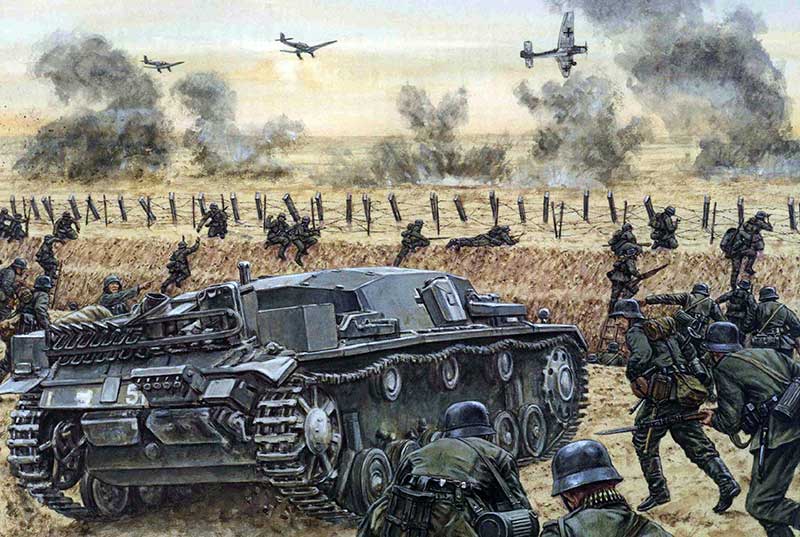
On the morning of 8 May 1942, Manstein initiated Operation Trappenjagd with the aim of annihilating the three Soviet armies located in the Kerch Peninsula. Manstein chose to surprise his adversaries by concentrating his main effort, or Schwerpunkt, in the marshy area south of Parpach, despite their numerical disadvantage. The Soviets did not anticipate an assault in this sector; however, they excavated an 11-meter-wide (36-foot) anti-tank ditch as a precaution. Manstein directed XXX AK to breach the anti-tank ditch and establish a penetration corridor for the 22nd Panzer Division to exploit. The 28th Light Division was at the forefront of Manstein's offensive, and he ensured its reinforcement with a battalion of assault guns, assault engineers, concentrated Stuka airstrikes, and corps artillery. Equipped with this assistance, the Jager penetrated the outer Soviet defenses and arrived at the ditch before dawn. The Jager have successfully secured the far side of the obstacle, while assault guns, artillery, and Stukas suppress the enemy. Manstein's concentration of superior force at the critical juncture enabled him to penetrate a seemingly impenetrable Soviet defense through the use of fire and maneuver. The breach and the incursion of German armor across the anti-tank ditch into the Soviet rear swiftly undermined the defense of the entire Soviet Crimean Front, leading to Manstein's most significant triumph.
World War II - Return to the Leningrad Front, August–November 1942
Following the fall of Sevastopol, Manstein vacationed in Romania for several weeks. Upon his return, new directives from the OKH instructed AOK 11 to travel by rail to join Generalfeldmarschall Georg von Küchler's Heeresgruppe Nord in the siege lines surrounding Leningrad. Hitler regarded Manstein as an authority in siege warfare and deemed him the most suitable candidate to successfully conclude the prolonged siege of Leningrad. Upon Manstein's arrival at the Leningrad front on 27 August 1942, the era of mobile operations had passed, and the region had transitioned into positional warfare akin to that of World War I. Owing to transportation challenges, AOK 11 would not arrive simultaneously but rather would advance northward gradually over a two-month duration.
Manstein was skeptical about capturing Leningrad, as his experience at Sevastopol indicated that a war of attrition in an urban environment defended by 200,000 enemy soldiers would likely deplete his forces significantly. Moreover, Heeresgruppe Nord was deficient in pioneers, artillery, assault guns, air support, and even ammunition necessary to implement the tactics that had proven effective at Sevastopol. Avoiding a pointless victory, Manstein devised Plan Nordlicht (Northern Light), which utilized a characteristically audacious maneuver strategy.
He aimed to deploy five infantry divisions and his available artillery to breach the Soviet fortified lines south of Leningrad, followed by a nocturnal assault across the Neva River. After securing a bridgehead, Manstein would advance the 12th Panzer Division and four newly deployed infantry divisions across the river to outflank the Soviet 55th Army, subsequently advancing north to disrupt the Leningrad-Osinovets railway line. He could swiftly deprive Leningrad of its resources by severing its fragile supply routes across Lake Ladoga, which would lead to its capitulation and enable him to avoid an expensive urban battle similar to Stalingrad.
Simultaneously, Soviet intelligence identified the presence of AOK-11 units near Leningrad and deduced that a German offensive was forthcoming. The Stavka commanded General Kirill Meretskov's Volkhov Front and General Lieutenant Leonid Govorov's Leningrad Front to execute a pincer maneuver against the Siniavino Heights to hinder German offensive preparations. On 27 August, the day of Manstein's arrival, both Soviet fronts launched an assault. Govorov's preliminary attempts to cross the Neva River were unsuccessful, resulting in Meretskov launching an assault on the Siniavino Heights with his 8th Army. Leveraging their significant numerical advantage, the Soviet infantry effectively penetrated the German lines, creating a substantial bulge into which Meretskov subsequently deployed a portion of the 2nd Shock Army. Initially intended as a spoiling attack, the offensive unexpectedly showed the potential to restore a land corridor to Leningrad.
Hitler recognized the imminent threat to the siege of Leningrad and instructed Manstein to assume direct command of all forces surrounding the Siniavino Heights, utilizing some of the assault divisions designated for the Leningrad offensive to neutralize the Soviet salient. Despite having to deploy two of his seasoned divisions incrementally to halt the Soviet advance, Manstein recognized that the optimal long-term strategy was to execute a pincer maneuver to encircle the Soviet salient. On 21 September, Manstein launched an offensive with six divisions, successfully encircling the salient and entrapping elements of the 8th Army and the 2nd Shock Army. Manstein subsequently devoted the following three weeks to diminishing the Kessel through artillery and aerial bombardments.
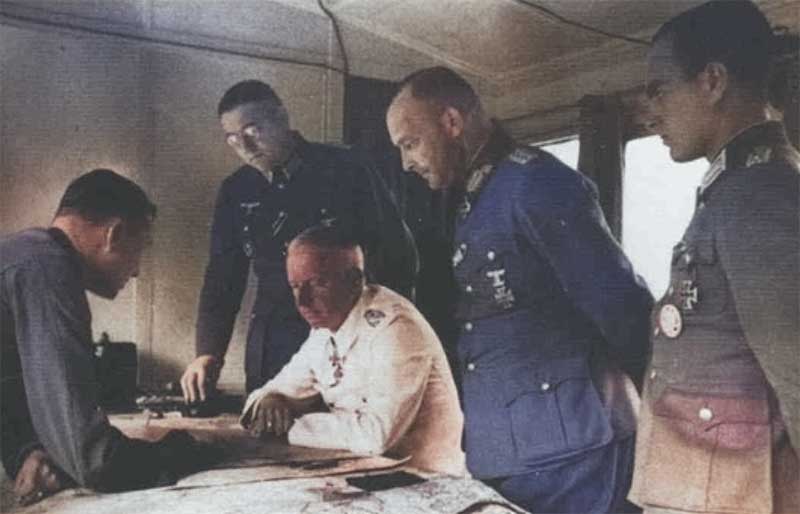
By mid-October, Manstein's AOK 11 had eradicated the Kessel and captured 12,000 prisoners, yet it incurred over 10,000 casualties itself. Heeresgruppe Nord decided to postpone Nordlicht until they could re-equip their units. As Manstein was considering the possibility of deploying Nordlicht in spring 1943, he received news on 30 October that a Soviet airstrike had killed his eldest son, Leutnant Gero von Manstein, the previous day near Lake Il'men. Manstein dined with Gero on 18 October, and his demise overshadowed the triumph in the initial battle of Lake Ladoga.
World War II - The Stalingrad Relief Operation, December 1942
While Manstein secured the German front near Leningrad, the Wehrmacht engaged in a lethal confrontation with the Red Army at Stalingrad. General der Panzertruppe Friedrich Paulus' Army Group 6 and a portion of General Oberst Herman Hoth's 4th Panzer Army reached the Volga River in early September 1942; however, after two months of fierce combat, the Soviets retained control of part of Stalingrad. General Nikolai Vatutin's Soviet Southwest Front and General-Colonel Andrei Yeremenko's Stalingrad Front assaulted the Romanian 3rd and 4th Armies protecting Paulus' flanks on 19 November, leading to a crisis and significant breakthroughs. As the Romanians collapsed, Hitler and the OKH recognized the imminent encirclement of AOK 6 and resolved to form Heeresgruppe Don to address the crisis.
After successfully repelling the Soviet offensive at Leningrad, Hitler deemed Manstein the appropriate choice to command the new formation and appointed him on 20 November. Manstein chose to accompany his chief of staff, Generalmajor Karl Friedrich Schulz, and his deputy, Oberst Theodor Busse, on this new assignment. Nevertheless, Manstein seemed unhurried in arriving at his new command, taking almost a week to reach the operational area, during which events progressed swiftly. In his memoirs, he asserted that “the weather was too inclement for flying,” compelling his travel by train for the entire journey; however, Friedrich W. von Mellenthin recounts that he flew from Rastenberg to Rostov in a single day to arrive at Heeresgruppe Don.
Upon Manstein's arrival at Novocherkassk near Rostov on 26 November, Vatutin's and Yeremenko's forces had already converged at Kalach, encircling more than 250,000 German and Romanian troops in the Stalingrad Pocket. Karl Hollidt, the General of Infantry, quickly established Armeeabteilung Hollidt to secure the Chir River. However, he faced constraints from rear-area forces, Luftwaffe flak units, and the remnants of the 22nd Panzer Division, which Colonel Walther Wenck had salvaged from Romania. General Oberst Hermann Hoth successfully rescued several Romanian troops and concentrated on securing the railhead at Kotelnikovo in anticipation of reinforcements.
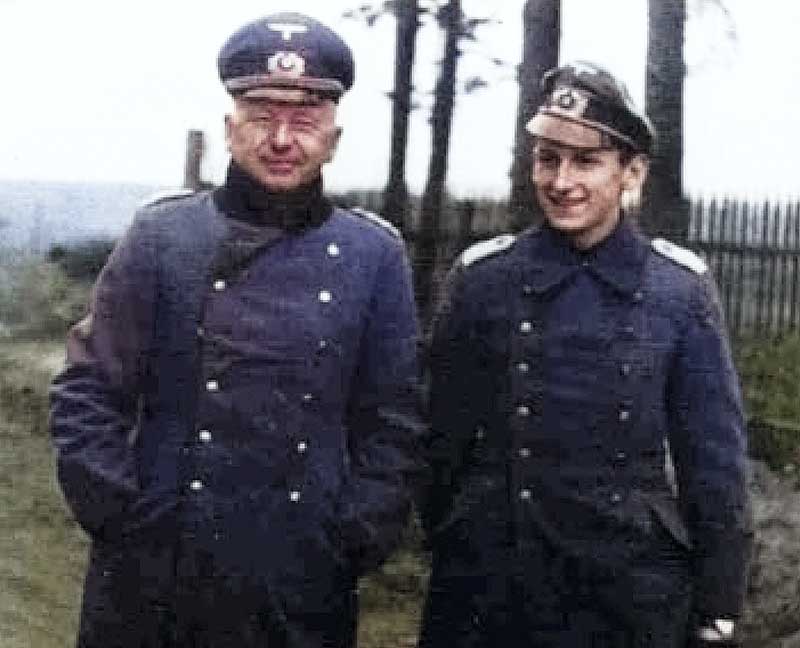
On the morning of 27 November, once Manstein's headquarters became operational at Novocherkassk (more than 200 km [125 miles] behind the front), Heeresgruppe B relinquished command of the troops in the Stalingrad Kessel to the newly established Heeresgruppe Don.
Nevertheless, Manstein's headquarters experienced inadequate communication with subordinate units for several days, obstructing his attempts to consolidate the new command. Manstein's initial directives from the OKH were “to halt the enemy's assaults and reclaim the positions we had previously held”; however, once Stalingrad was encircled, the orders were elevated to a relief operation aimed at rescuing Paulus' army, which was approximately 135 km (84 miles) from the new German front line at Kotelnikovo. In his memoirs, Manstein contended that the Sixth Army's subordination to HQ Heeresgruppe Don was largely illusory, asserting that the OKH and Hitler exerted direct control over Paulus.
He stated that the army group could no longer command it but could only provide assistance. Manstein recognized that the Stalingrad crisis would probably culminate unfavorably for the Wehrmacht and exerted considerable effort to attribute responsibility for the ensuing events to the OKH and Hitler, evidently evading his command obligations. While the majority of Soviet efforts were focused on weakening the Stalingrad Kessel, Vatutin assigned General-Major Nikolai Trufanov's 51st Army to protect the southwestern approaches to Stalingrad.
Despite the formidable efforts of Hollidt, Hoth, and Wenck, Manstein had scarce resources upon his arrival and questioned his ability to maintain the current front, let alone advance 135 km (84 miles) to relieve Paulus. The OKH assured Manstein of reinforcements for the relief operation; however, Hitler was hesitant to reallocate units from the nearest source (Heeresgruppe A in the Caucasus) and consented only to the deployment of the understrength 23. Panzer Division.
The sole seasoned and fully equipped unit capable of initiating the relief operation was Generaloberst Erhard Raus' 6. Panzer-Division, traveling from Belgium with a complete contingent of 140 tanks. The primary units of the 6th Panzer Division reached Kotelnikovo on 27 November. The 11th Panzer Division also arrived to provide Hollidt with a mobile reserve on the Chir River front. By early December, Hoth had begun organizing these reinforcements into the XLVIII Panzerkorps and the LVII Panzerkorps. Concurrently, Manstein's staff formulated a rescue strategy, Operation Wintergewitter (Winter Storm), which proposed a dual offensive with the XLVIII Panzerkorps advancing on the left from the Chir River and the LVII Panzerkorps advancing on the right from Kotelnikovo. Nonetheless, even if the rescue successfully arrived at Stalingrad, Manstein understood that Hitler would not permit the evacuation of the city.
Vatutin and Yeremenko simultaneously dispatched General-Major Prokofii Romanenko's 5th Tank Army to assault Hollidt's vulnerable position along the Chir River, determined to deny Manstein any opportunity to organize a substantial offensive. On 6 December, the 5th Tank Army executed a significant incursion across the Chir River, compelling Manstein to deploy the XLVIII Panzerkorps to reestablish the front. Subsequently, the Soviet 5th Tank Army conducted a series of minor assaults on the Chir River line, which inhibited the XLVIII Panzerkorps from engaging in Wintergewitter, thereby limiting the relief operation to a singular corps effort.
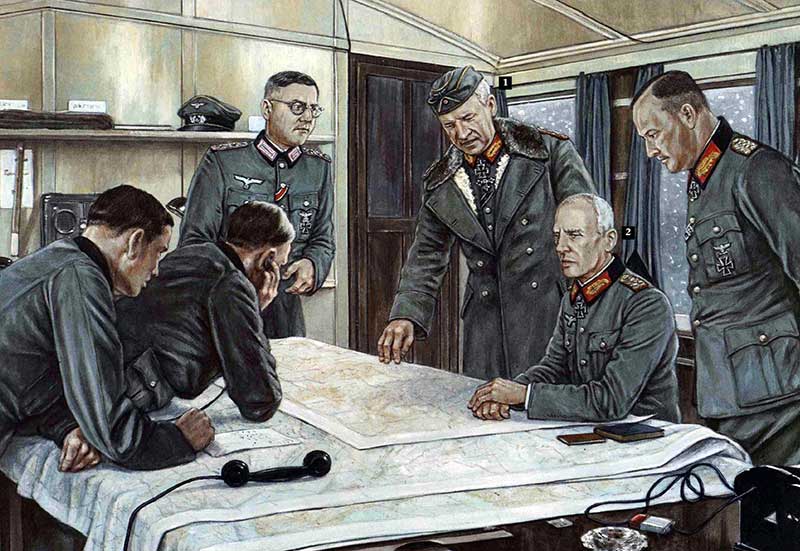
Manstein favored awaiting additional reinforcements, yet Soviet attempts to diminish Stalingrad persisted. Kessel asserted that a relief operation must be executed before AOK 6 becomes too weakened to escape. He hesitantly commanded Hoth to initiate Operation Wintergewitter on 12 December, deploying only the 6th and 23rd Panzer Divisions from LVII Panzer Corps, amounting to a mere 180 tanks. Nonetheless, Hoth's Panzers swiftly overwhelmed Trufanov's two rifle divisions north of Kotelnikovo, and the Luftwaffe successfully secured some air support from Fliegerkorps IV. By the conclusion of the initial day, Hoth's Panzers had progressed approximately 20 km (12 miles), yet Yeremenko promptly dispatched the 4th Mechanized Corps and 13th Tank Corps to bolster the faltering 51st Army. On the second day of Wintergewitter, Hoth's Panzers arrived at the Aksay River; however, Stalin commanded General-Lieutenant Rodion Malinovsky's augmented 2nd Guards Army to thwart the German relief operation.
In a fruitless endeavor against time, Hoth's Panzers ultimately managed to traverse the Aksay River, only to encounter Soviet reinforcements immediately thereafter. Raus engaged in and triumphed over a two-day armored confrontation with the Soviet 4th Mechanized Corps near Verkhne Kumski; however, the postponement proved detrimental. Raus successfully maneuvered a Kampfgruppe to capture a crossing over the Myshkova River, located 48 km (30 miles) from the Stalingrad Kessel, on the evening of 19 December; however, they encountered the vanguard of Malinovsky's army, rendering any further advance perilous.
Manstein recognized that the relief force would not advance any further, yet he hesitated to communicate the codeword “Thunderclap” to Paulus, apprehensive of openly defying Hitler. Instead, he dispatched his intelligence officer, Major Hans Eismann, into the encirclement to persuade Paulus to assume the initiative independently. However, Paulus, not inclined to take chances, requested permission from the OKH to launch a breakout, only to have it denied. Simultaneously, the Soviets initiated Operation Malvyy Saturn (Little Saturn) on 16 December, targeting the Italian 8th Army and Romanian 3rd Army, which advanced against the left flank of Heeresgruppe Don. In a week, Soviet armor advanced rapidly toward the Donets and the airbases, facilitating the Stalingrad airlift. Moreover, the 5th Tank Army successfully crossed the Chir River in substantial numbers, rendering Hollidt unable to safeguard Hoth's flanks.
Notwithstanding the evident signs of impending failure, Manstein hesitated to terminate Wintergewitter while there remained a possibility that Hitler could reconsider his decision. For three days, he restrained Hoth's Panzers at the Myshkova River, unsuccessfully anticipating authorization for a breakout or for Paulus to initiate one independently. Neither occurred.
Malinovsky attacked the immobilized Panzer divisions, causing significant casualties, while the feeble Romanian VI and VII Corps defending Hoth's flanks retreated. By the time Manstein ultimately terminated Wintergewitter, nearly his entire front was disintegrating, and Soviet tanks were inundating the primary Luftwaffe airbase at Tatsinskaya. Moreover, the attempt to alleviate Stalingrad had significantly diminished the LVII Panzerkorps, the sole mobile reserve accessible to Heeresgruppe Don. Malinovsky sufficiently weakened Hoth's forces to drive him back to Kotelnikovo within five days, and by year's end, all of Manstein's forces were in retreat.
The Hour of Destiny for Erich von Manstein
World War II - The Front Collapses, January-February 1943
Hitler's insistence on retaining the majority of Heeresgruppe A in the Caucasus hindered Manstein's efforts to establish a new southern front along the Donets, following the write-off of AOK 6. Even though Manstein only had the weak 19th Panzer Division monitoring a 60 km-wide (37-mile) area surrounding Starobyelsk after the Italians' defeat, Hitler was reluctant to abandon his bridgehead in the Caucasus when it was not under significant attack. As long as Heeresgruppe A was stationed in the Caucasus, Manstein was compelled to allocate the 4. Panzerarmee and Armeeabteilung Hollidt to safeguard their supply routes via Rostov.
Consequently, Manstein had limited forces available to address his exposed left flank, which presented an opportunity for a Soviet encirclement. He repositioned his limited, exhausted Panzer divisions to reinforce the deteriorating front, successfully inflicting damage on some Soviet spearheads; however, this effort was sadly inadequate to halt the relentless momentum of the Soviet offensives, which appeared to occur in rapid succession. By early January, Raus' once mighty 6. Panzer-Division had diminished to merely 32 tanks, yet it remained the most effective mobile unit within Heeresgruppe Don. Encouraged by the vulnerability of Manstein's troops, Vatutin's Southwest Front advanced toward Millerovo and the Donets, compelling the OKH to rapidly establish Armeeabteilung Fretter-Pico to impede the offensive.
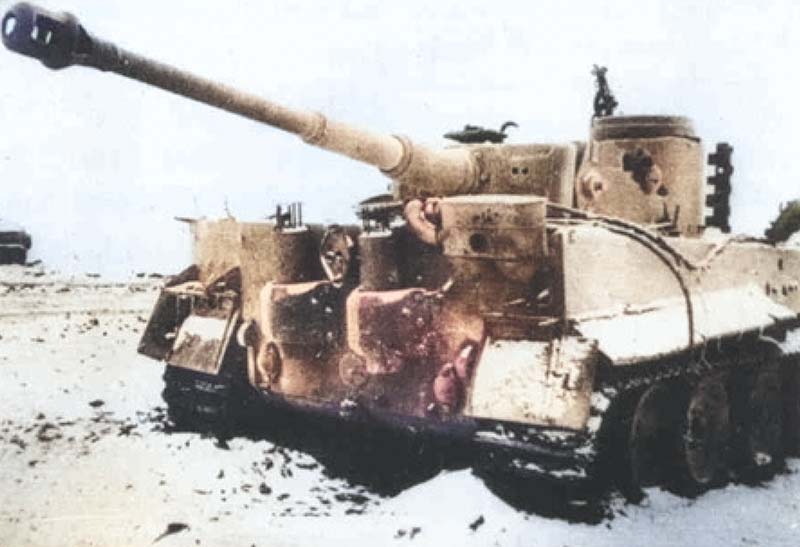
Manstein was fortunate that AOK 6 endured for an additional month, thereby immobilizing seven Soviet armies that would have otherwise advanced westward. On 13 January 1943, a new catastrophe commenced as the Bryansk and Voronezh Fronts initiated a substantial offensive against Heeresgruppe B, swiftly overpowering the Hungarian 2nd Army. Within a week, the Soviets captured 89,000 prisoners, resulting in the complete disarray of the Axis front between Orel and Rostov. Heeresgruppe B assembled a screening force from remnants of Armeeabteilung Lanz to secure the 150 km-wide (93-mile) gap between the two army groups. As the entire southern front confronted disaster, Hitler ultimately sanctioned a portion of the 1. The Panzerarmee commenced the evacuation of the Caucasus on 24 January, and Manstein swiftly directed these three divisions toward his exposed left flank, which he subsequently described in chess terminology as "castling.”.
Unbeknownst to the Stavka, formidable reinforcements were advancing to Manstein's command from Western Europe. SS-Obergruppenführer Paul Hausser's SS-Panzerkorps, comprising the SS-Panzergrenadier-Divisions “Leibstandarte Adolf Hitler," “Das Reich," and "Totenkopf," were commencing their arrival in the Kharkov region in late January. Hausser's corps possessed 317 tanks, rendering it one of the most formidable armored formations on the Eastern Front. Hitler accurately regarded this corps as a strategic asset and mandated that it remain under direct OKH control, stipulating that Manstein could not utilize it without authorization.
Manstein had to leave his headquarters in Novocherkassk and relocate to Zaporozhe as Armeeabteilung Hollidt retreated towards Rostov. Stalin commanded the Red Army to exploit its advantage, and the Stavka determined it was time to implement the theory of “deep operations." Despite the depletion of Soviet forces and insufficient logistical support, the Stavka determined that Heeresgruppe B and Heeresgruppe Don were disintegrating and resolved to launch two significant offensives to frustrate the Germans from establishing a new front east of the Dnepr River. On January 29-30, Vatutin's Southwest Front would initiate Operation Skachok (Gallop) by assaulting Manstein's vulnerable left flank. Upon breaching the fragile German defensive line, Vatutin would advance Mobile Group Popov, comprising over 200 tanks across four tank corps, southward for 300 kilometers (186 miles) to the Sea of Azov to encircle Heeresgruppe Don.
Despite the reduction of most front-line Soviet units to approximately 60 percent strength, they initiated these new offensives with a two-to-one numerical advantage in personnel and a four-to-one superiority in armored vehicles. On 2 February, General-Colonel Filipp I. Golikov's Voronezh Front commenced Operation Zvezda (Star), with three armies advancing towards Kharkov and two armies directed towards Kursk. Malinovsky's Southern Front would persistently advance toward Rostov to constrain Heeresgruppe Don, while Golikov and Vatutin progressed into the void between Heeresgruppe B and Heeresgruppe Don.
Initially, the dual Soviet offensives progressed favorably, compelling the Germans to relinquish substantial territory, albeit gradually. On Vatutin's front, the 1st Guards Army successfully crossed the Donets River on 1 February, only to encounter III Panzerkorps at Slavyansk. Vatutin was astonished to discover that reinforcements from the 1. Panzerarmee had already reached Manstein's command; however, instead of circumventing this hurdle, he initiated a lengthy two-week conflict for these towns. When the fatigued Soviet rifle divisions demonstrated insufficient strength to achieve a breakthrough independently, Vatutin imprudently allocated a portion of Mobile Group Popov (designated for exploitation) to overpower the German stronghold at Slavyansk.
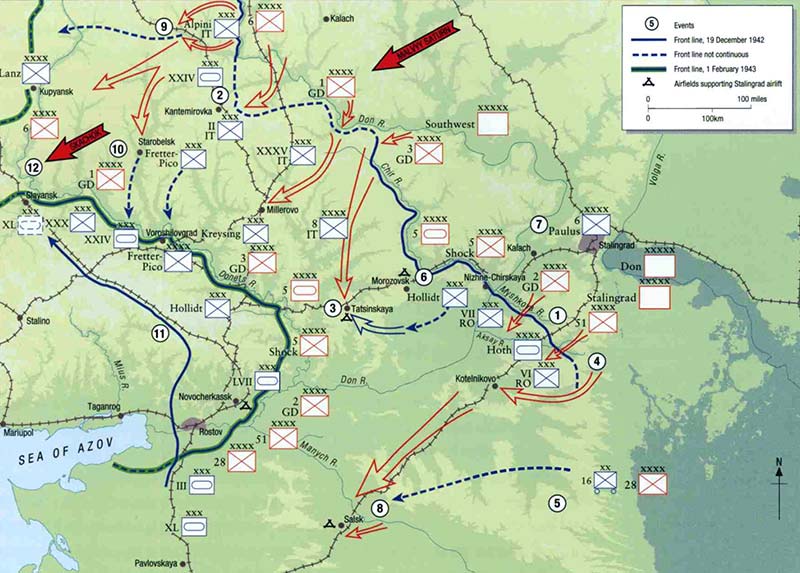
- On 19 December, Hoth's Panzers arrived at the Myshkova River but could progress no further. Paulus decides against attempting an escape from the Stalingrad encirclement.
- 19 December: Beginning on 16 December, Operation Malvyy Saturn (Little Saturn) continues to dismantle the Italian Eighth Army. Kantemirovka has fallen.
- On 24 December, Soviet tanks captured the airfield at Tatsinskaya, significantly impeding the airlift to Stalingrad.
- On December 24, the 51st and 2nd Guard Armies of the Stalingrad Front commence the offensive against Hoth's Panzer divisions, driving them back from the Myshkova River. Both Romanian corps that were securing Hoth's flanks disintegrated within days, forcing him to retreat to Kotelnikovo.
- On 30 December, the 16th Motorized Infantry Division, tasked with securing the exposed Kalmyuk steppe, commences its withdrawal. The Soviet 28th Army advances.
- They seize the Morozovsk airfield on 2 January, disrupting the railway connection to Armeeabteilung Hollidt. Hollidt requests a withdrawal for the Donets.
- On 10 January, the Don Front initiates Operation Koltso (Ring) to diminish AOK 6 within the Stalingrad pocket. Combat persists for three weeks until Paulus capitulates.
- On 11 January, the Soviet 51st Army and 2nd Guards Army advance to the Manych River, jeopardizing the rear of Heeresgruppe A in the Caucasus.
- On 13 January, the Soviet 6th Army assaults and encircles the Italian Alpini corps. Following intense combat, the Italian survivors manage to escape and reach the Donets.
- On 24 January, the 6th Army seized Starobyelsk. Both the XXIV Panzerkorps and Armeeabteilung Fretter-Pico retreated south of the Donets.
- On 24 January, after Hitler authorizes the 1st Panzer Army to retreat from the Caucasus to bolster Manstein's defense on the Donets, Manstein swiftly deploys the I and XL Panzer Corps to reinforce his line near Slavyansk.
- On 29-30 January, Vatutin's Southwest Front initiates Operation Skachok (Gallop) by assaulting Manstein's vulnerable left flank on the Donets. The 6th Army does not traverse the Donets until 1 February.
Popov succeeded in encircling the 7th Panzer Division temporarily; however, this prolonged engagement depleted Vatutin's scarce resources of fuel and ammunition, diverting him from his primary operational goals. Concurrently, Manstein urged the 1. Panzerarmee to expedite the deployment of its XL Panzerkorps to bolster the III Panzerkorps at Slavyansk. On 11 February, Vatutin regained clarity and resolved to withdraw Popov's armor from the indecisive engagement at Slavyansk, redirecting it to the exposed left flank of the 1. Panzerarmee. The 4th Guards Tank Corps maximized the exceptional mobility of their tanks, advancing over 50 km (30 miles) through deep snow and unexpectedly occupying Krasnoarmeyskoye, thereby disrupting Heeresgruppe Don's primary railway communications to Dnepropetrovsk.
Upon Vatutin's realization that there were essentially no Germans defending a 100km-wide (62-mile) gap between the 1st Panzer Army and the SS Panzer Corps, he ultimately invigorated the 6th Army and the remainder of Popov's armored forces to advance toward Pavlograd and the Dnieper River. Vatutin's forces would imminently encircle Heeresgruppe Don unless they implemented prompt and decisive measures.
On Golikov's Voronezh Front, Operation Zvezda successfully repelled Armeeabteilung Lanz, prompting Lanz to deploy elements of the newly arrived 2. SS-Panzergrenadier Division “Das Reich” to establish blocking positions east of Kharkov. Hitler opposed the incremental deployment of the SS-Panzerkorps; however, this action effectively secured crucial time for the remaining “Das Reich” and “Leibstandarte” divisions to reach Kharkov. “Das Reich” successfully thwarted all attempts by the 3rd Tank Army to traverse the Donets River from 5 to 9 February. On 6 February, Manstein traveled to the Wolfsschanze in Rastenberg to discuss with Hitler the prioritization of responses to the two Soviet offensives.
Manstein was primarily concerned about Vatutin's incursion, while Hitler concentrated solely on Kharkov, insisting on its defense at all costs. Manstein ultimately persuaded Hitler that to acquire the necessary reserves for a substantial counteroffensive, it was imperative to shorten his front by relinquishing Rostov. Hitler begrudgingly permitted Armeeabteilung Hollidt to withdraw over 120 km (75 miles) to the Mius River, where it could establish a more robust defensive position. He also authorized Manstein to relocate Hoth's 4th Panzer Army from the Rostov region to impede Vatutin's advance toward the Dnepr. Consequently, the conference on 6 February ultimately provided Manstein with the necessary flexibility to execute his preferred form of Bewegungskrieg rather than merely engaging in positional warfare in response to Soviet offensives.
As Hitler and Manstein deliberated the operational framework for the German counteroffensive, Lanz and Hausser executed a tenacious yet ineffective defense of Kharkov. Hausser secured the city's approaches with his two divisions, augmented by the Infanterie-Division “Groβdeutschland” (mot.), while Golikov advanced with three armies. On 10 February, Golikov initiated a direct offensive against Kharkov utilizing the 69th Army and the 3rd Tank Army, but Hausser successfully repelled these assaults. Nonetheless, the withdrawal of Armeeabteilung Lanz from Belgorod resulted in the absence of a continuous German defense north of Kharkov, prompting Golikov to dispatch the 40th Army to encircle the city. Moreover, the Soviet 6th Guards Cavalry Corps advanced into an unprotected region south of Kharkov, jeopardizing the sole remaining railway connection to the city.
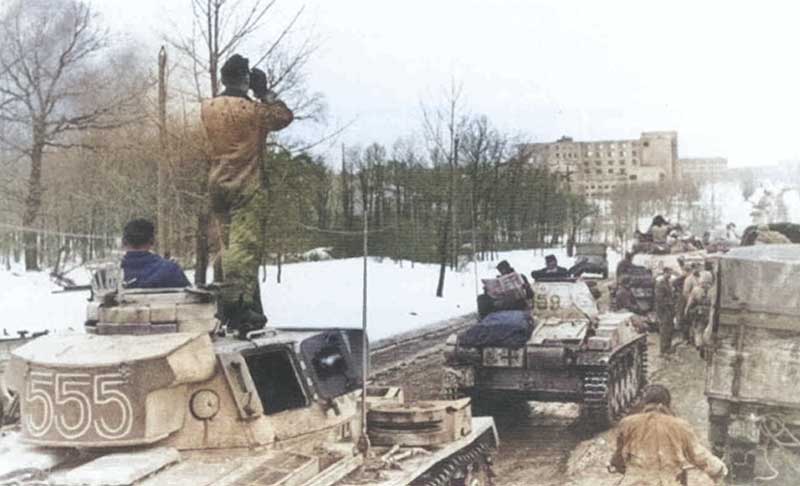
Lanz possessed sufficient reserves to address only one threat concurrently, opting to neutralize the Soviet cavalry; however, this decision compromised the city's defense at a pivotal juncture. By 14 February, Rybalko's 3rd Tank Army arrived at the eastern periphery of Kharkov, while the Soviet 40th Army was encircling the city from the north-west. On that day, Hitler appointed Manstein to command both Armeeabteilung Lanz and the SS-Panzerkorps. Considering Hitler's assurances of additional reinforcements, Manstein commanded Lanz and Hausser to defend Kharkov at all costs. However, Hausser acknowledged that his corps faced the threat of encirclement and promptly sought authorization to retreat from the city, a request that Manstein denied.
As the trap was nearing closure, Hausser opted to evacuate Kharkov, directly contravening Hitler's directive to retain the city at any expense. Manstein communicated with Hausser to maintain control of Kharkov, yet absurdly instructed him to evade encirclement. Manstein evidently sought to avoid the loss of the majority of the SS-Panzerkorps in a pointless engagement to preserve a symbolic objective; however, as with Paulus at Stalingrad, he exhibited a deficiency in the moral fortitude expected of senior commanders, delegating the dangerous decisions to his subordinates. Following intense combat, Golikov's troops penetrated Kharkov by noon on 16 February; however, the Groβdeutschland Division and the SS-Panzerkorps evaded capture to continue their operations. Nonetheless, both the “Leibstandarte” and “Das Reich” incurred significant casualties in the Kharkov conflict, with only one-third of their Panzers remaining operational.
Furious over the loss of Kharkov, Hitler traveled to Manstein's headquarters in Zaporozhe on 17 February to ascertain the reasons for the disobedience of his orders. The defeat at Kharkov made Manstein, Hausser, and Lanz's careers at risk, and Joseph Goebbels said Hitler was ready to fire them. Manstein skillfully directed culpability onto Lanz and Hausser, leading Hitler to approve the replacement of Lanz with Werner Kempf. Hitler instructed Manstein to prioritize the recapture of Kharkov for the forthcoming counteroffensive; however, Manstein effectively highlighted the greater threat presented by Vatutin's advance towards the supply lines along the Dnepr. Supporting Manstein's argument, Soviet tanks from Mobile Group Popov advanced to within 32 kilometers (20 miles) of the Dnepr River on the day of Hitler's arrival.
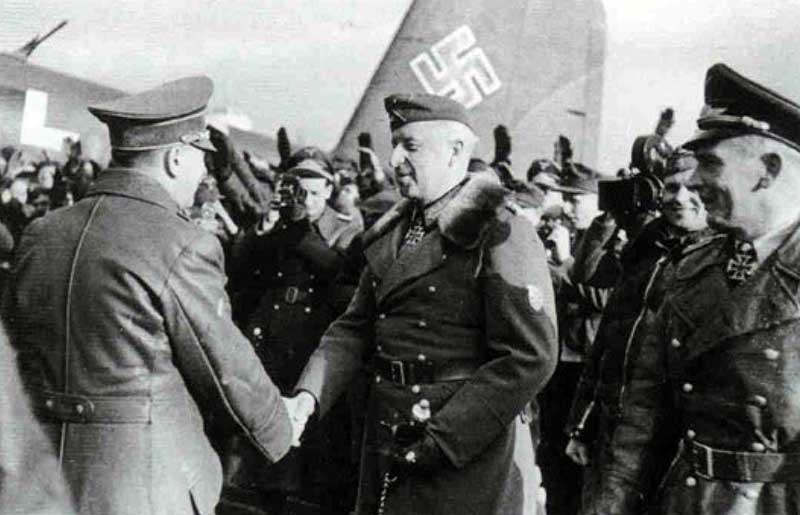
Upon observing the situation maps, the Führer recognized that there were nearly no German units positioned to obstruct the imminent severance of the primary supply networks across the Dnepr in the forthcoming days, thereby comprehending the seriousness of the predicament. Hitler consented to Manstein's deployment of the SS-Panzerkorps initially to halt Vatutin and subsequently to reclaim Kharkov. Considering the disintegration of nearly all formations within Heeresgruppe B, Hitler resolved to disband that headquarters and to reassign Manstein's command as Heeresgruppe Süd, effective immediately. Consequently, Manstein was tasked with halting both operations, Zvezda and Shackok, each appearing poised for significant success. For Manstein, the pivotal moment in his military career had now come, necessitating the full extent of his professional expertise to avert disaster.
World War II - Kharkov 1943: The Backhand Blow
Throughout February, Manstein prepared for a counteroffensive; though, to concentrate adequate forces for a viable assault, he had to accept risks in certain regions. After crossing the Mius River, Hollidt's contingent successfully fortified the right flank of Heeresgruppe Süd temporarily. Heeresgruppe Süd was starting to receive new infantry divisions from Western Europe, thereby liberating the Panzer divisions from front-line defensive responsibilities. Despite the arrival of 1. Panzerarmee, Popov's armored forces and the Soviet 6th Army continued to penetrate Manstein's left flank, leaving a significant gap between it and Armeeabteilung Kempf.
Manstein devised a quintessential Bewegungskrieg strategy—a concentric pincer maneuver utilizing rapid formations to encircle and annihilate the Soviet incursion. By seizing Kharkov, the Soviets inadvertently advanced Manstein's strategy by liberating the SS-Panzerkorps from a static defense of the city. Manstein subsequently instructed Hausser to consolidate his corps in proximity to Krasnograd and ready for a counteroffensive. To obstruct access to the Dnepr River, Manstein relocated XLVIII Panzerkorps from Hoth's 4. Panzerarmee to Dnepropetrovsk. Hoth would command the primary operation, comprising the SS-Panzerkorps and XLVIII Panzerkorps, while Mackensen's 1. Panzerarmee would execute a supplementary assault with XL and LVII Panzerkorps.
On the opposite side of the hill, Vatutin informed the Stavka that the enemy is undoubtedly expediting the withdrawal of forces from the Donbas across the Dnepr. Soviet intelligence identified Manstein assembling Panzer units but erroneously interpreted this as evidence of a German evacuation.
Vatutin erroneously determined that the Germans were retreating and advanced his forces beyond the culmination point of their effectiveness. Despite being 32 km (20 miles) from the Dnepr River, the nearly depleted fuel of the 25th Tank Corps left Mobile Group Popov dispersed rather than concentrated. Golikov also resolved to advance his 40th and 69th Armies further westward following the capture of Kharkov, but this merely scattered the fatigued forces. Under pressure, Army Group Kempf gradually retreated, pleading for reinforcements to prevent a total collapse. Manstein recognized his insufficient resources to assist Kempf while simultaneously launching a counteroffensive; therefore, he informed Kempf that no additional support would be forthcoming until the counteroffensive met its objectives. Despite Manstein's awareness of Kempf's insufficient forces to sustain a continuous front, he undertook the calculated risk that his counteroffensive would prevail before Golikov could annihilate Armeeabteilung Kempf.
Manstein undertook a strategic risk by directing the initial units of the 15. Infanterie Division, recently arrived by rail from France, to detrain on the periphery of Sinel'nikovo, which had been seized by the Soviet 25th Tank Corps. The infantrymen successfully deployed a regimental-sized Kampfgruppe before the Soviets could respond, subsequently driving the astonished Soviet tankers out of the town on 19 February. By capturing Sinel'nikovo, Manstein established a new obstruction between the Soviet offensives and the Dnepr River, allowing Hoth to concentrate on dismantling the flanks of the Soviet incursion. In a subsequent preliminary operation, XL Panzerkorps encircled and vanquished the Soviet 4th Guards Tank Corps at Krasnoarmeyskoye, facilitating the clearance of the rail line to sustain Armeeabteilung Hollidt's supply.
The counteroffensive on Hoth commenced in the early hours of 20 February. As the SS-Panzergrenadier-Division “Leibstandarte SS Adolf Hitler” departed to impede Golikov's westward advance from Kharkov, the remainder of Hausser's SS-Panzerkorps launched a southern assault from Krasnograd against the flank of the 6th Army. Initially, the SS-Panzergrenadier Division “Das Reich” initiated its assault with 56 tanks and assault guns; however, two days later, the SS-Panzergrenadier Division “Totenkopf” intensified the attack with an additional 90 tanks. The XLVIII Panzerkorps, comprising the 6th and 17th Panzer Divisions, commenced an offensive northward toward Lozovaya.
The German armored Kampfgruppen managed to advance over 100 kilometers (62 miles) in three days due to the sufficiently frozen ground; however, an early spring thaw resulted in thick mud that hindered their mobility. Vatutin remained unaware of the imminent danger and commanded the 6th Army to execute a river crossing of the Dnepr River on the night of 21-22 February; however, the SS-Panzergrenadier-Division “Das Reich” encircled a segment of the 6th Army and reclaimed Pavlograd on 22 February. On the following day, XL Panzerkorps participated in the counteroffensive alongside XLVIII Panzerkorps on the right flank. At this point, Vatutin finally realized the danger and started mobilizing reserves to counter the enemy counteroffensive. He also asked the Stavka to direct Golikov to stop his westward advance.
On 24 February, Manstein's counteroffensive gained traction as XL Panzerkorps dismantled Popov's three encircled tank corps, each diminished to a mere few dozen tanks. The three German Panzerkorps systematically annihilated Vatutin's forces incrementally before they could respond, although they mounted a formidable defense in the town of Lozovaya. Vatutin never commanded a transition to defense, leaving the Germans facing numerous units that remained extended and dispersed.
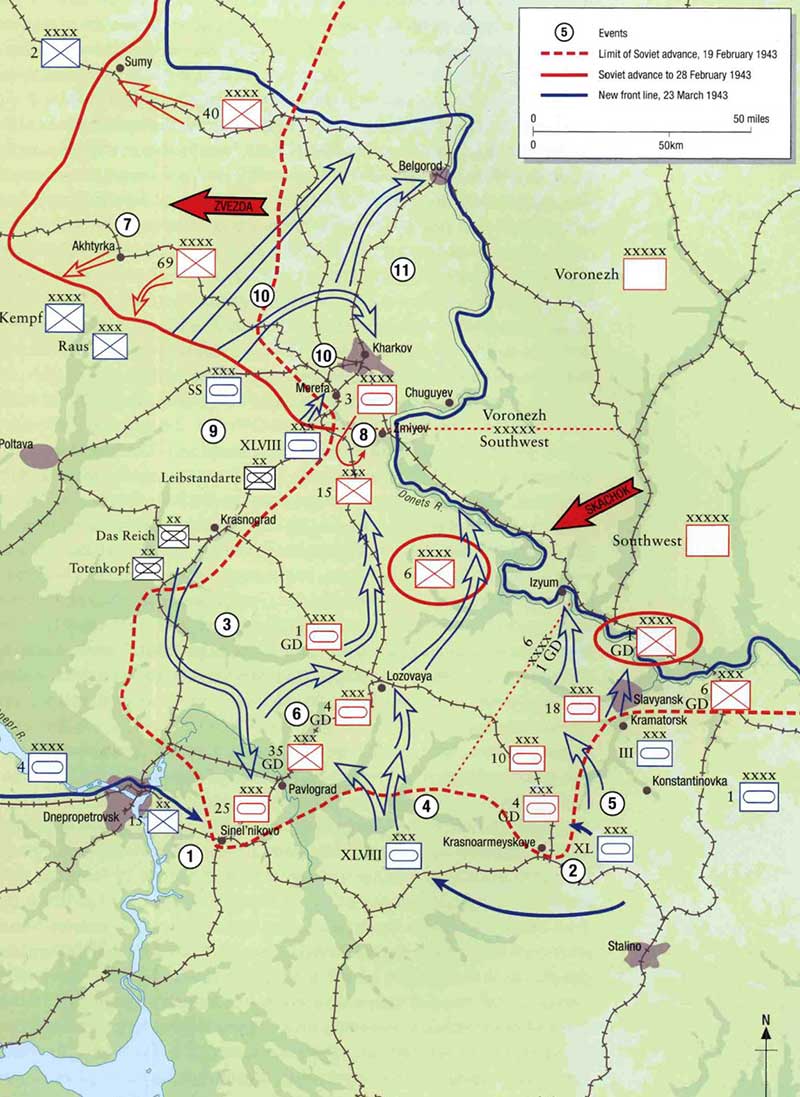
- On 19 February, Manstein audaciously commands the 15th Infantry Division to disembark just outside Sinel'nikovo. This maneuver surprises the Soviet 25th Tank Corps, resulting in the recapture of the town.
- On 19 February, the XL Panzerkorps vanquished the Soviet 4th Guards Tank Corps at Krasnoarmeyskoye.
- On 20 February, the 2nd SS-Panzergrenadier Division "Das Reich" and the 3rd SS-Panzergrenadier Division "Totenkopf" commenced an assault on the flank of the Soviet 6th Army near Pavlograd.
- On 21 February, the XLVIII Panzerkorps initiate an offensive northward toward Lozovaya.
- From 23 to 24 February, the XL Panzerkorps, comprising the 5th SS Panzergrenadier Division “Wiking” and the 7th and 11th Panzer Divisions, advance against Popov's three encircled tank corps north of Krasnoarmeyskoye.
- February 25-26: the Battle of Lozovaya. The SS-Panzerkorps and XLVIII Panzerkorps encircle the town and, following intense combat, annihilate the besieged defenders.
- From 20 to 28 February, the Soviet 40th and 69th Armies persist in their westward advance, repelling Armeeabteilung Kempf. Golikov transitions to defense upon the realization of Vatutin's defeat.
- From 3 to 5 March, the Stavka instructs Rybalko's 3rd Guards Tank Army to advance southward to halt the 4th Panzer Army's offensive towards Kharkov; however, the SS Panzer Corps encircles and annihilates Rybalko's armored forces.
- On 6 March, Hoth reallocates the SS-Panzerkorps and XLVIII Panzerkorps westward, initiating the advance towards Kharkov with six mechanized divisions in formation.
- On 7 March, Korps Raus initiates a supporting offensive against the 69th Army, which commences its withdrawal.
- March 10-14: The Third Battle of Kharkov. The SS-Panzerkorps successfully encircles the city to the north, but the XLVIII Panzerkorps lacks the necessary strength to complete the encirclement. The SS-Panzerkorps advance into the city amid intense opposition.
The Luftwaffe reemerged and contributed to the destruction of Soviet troop concentrations. Following the capture of Lozovaya, Hoth redirected the SS-Panzerkorps' advance northward toward Kharkov, while XL and XLVIII Panzerkorps drove Vatutin's forces back to the northeast. Despite XLVIII Panzerkorps having merely eight operational tanks across its two Panzer divisions, the Soviet 6th Army and 1st Guards Army were in complete retreat toward the Donets, offering only minimal resistance. Vatutin allocated the remaining reserves from the Voronezh Front to maintain his foothold across the Donets at Slavyansk, forcing the 1st Guards Army to withdraw across the river.
As Manstein dismantled Vatutin's command, Golikov persisted in repelling Armeeabteilung Kempf. Upon recognizing the threat to the Southwest Front, the Stavka instructed Golikov to halt his offensive and deploy Rybalko's 3rd Tank Army to assist Vatutin's beleaguered forces. It was a situation of insufficient resources and delayed action, as Rybalko's army possessed merely 30 tanks, and by the time of their arrival, Vatutin's forces were already in complete retreat.
On 3 March, Rybalko advanced south from Kharkov and encountered the SS-Panzerkorps, which swiftly obliterated his armored forces. As of 5 March, Rybalko had depleted his tank resources but retained three rifle divisions and the 6th Guards Cavalry Corps to safeguard the southern approaches to Kharkov. To compensate for his losses, the Stavka successfully dispatched two additional tank brigades and more infantry to Rybalko; however, the initiative on the battlefield had shifted to the Germans.
The defeat of the 3rd Tank Army's mobile units facilitated the initiation of the second phase of Manstein's counteroffensive, wherein he aimed to encircle and annihilate the majority of Golikov's Voronezh Front. Golikov positioned the 40th and 69th Armies to defend Kharkov; however, he had seized significantly more territory than his diminished rifle divisions could maintain, and he lacked an armored reserve. Manstein assigned the 4th Panzer Army, comprising all three divisions from the SS Panzer Corps, as his primary force, flanked on the right by three Panzer divisions from the XLVIII Panzer Corps. Hausser commenced his offensive on March 6, advancing swiftly toward Kharkov against three rifle divisions of the 69th Army.
On 7 March, Armeeabteilung Kempf commenced its counteroffensive by assaulting the overstretched 40th Army with the Infanterie-Division “Groβdeutschland” (mot.) and two infantry divisions. Within three days, the Waffen-SS forces reached the periphery of Kharkov, and by 10 March, they were encircling the city from the north. Manstein favored encircling the city to evade expensive urban warfare; however, an impatient Hitler urged Hausser to swiftly eliminate the defenders, commanding the SS-Panzergrenadier-Division “Leibstandarte” to penetrate the city.
Following intense urban warfare, Hausser's SS forces captured Kharkov on 14 March and effectively drove Golikov's troops back to the Donets River. On 16 March, Hausser's forces briefly reclaimed Belgorod; however, the Infanterie-Division Groβdeutschland (mot.) encountered three fully equipped Soviet tank corps that had been swiftly deployed to the region by the Stavka, signifying the end of easily defeating understrength, poorly supplied units. Manstein aspired to advance and capture Kursk; however, with the arrival of Soviet reinforcements and the roads transforming into muddy quagmires, he resolved to withdraw while in a favorable position. The SS-Panzerkorps incurred 11,519 casualties during the counteroffensive and were diminished to approximately 100 operational tanks and assault guns. The XLVIII Panzerkorps were in a deteriorated condition, possessing approximately 40 operational tanks.
Ultimately, Manstein's month-long counteroffensive had decisively defeated Vatutin's front and considerably weakened Golikov's front. Vatutin's command sustained approximately 30,000 casualties, whereas Golikov's incurred 58,000 casualties, in addition to significant material losses. Manstein's counteroffensive significantly reduced eight of the 20 Soviet tank corps on the Eastern Front, even though the 4. Panzerarmee captured a modest number of prisoners, with Hoth claiming 12,430.
While none of these corps were destroyed, nearly all required three to four months for reconstruction and recovery, thus granting the Wehrmacht significant space. The only notable acquisition that the Soviets managed to retain from either Zvezda or Skachok was the Kursk salient, which extended into the boundary between Heeresgruppe Süd and Heeresgruppe Mitte. Manstein's counteroffensive abruptly halted the succession of Soviet triumphs and restored a degree of optimism within the Wehrmacht. Despite the defeat at Stalingrad, Manstein's victory demonstrated that the Wehrmacht was still capable of conducting successful Bewegungskrieg, albeit in a limited capacity and under favorable circumstances.
World War II - Operation Zitadelle
The spring thaw offered both parties an opportunity to reconstruct and contemplate their subsequent actions. Manstein recognized that, despite the effectiveness of his “backhand blow," Heeresgruppe Süd remained significantly weakened and would struggle to withstand another comprehensive Soviet offensive. Hitler expressed gratitude for Manstein's recovery of Kharkov and the restoration of the front; however, he dismissed a defensive strategy and aimed to regain the initiative in 1943 by initiating a limited-objectives offensive in a location with favorable odds for German success.
Manstein advocated for the eradication of the Kursk salient as a rational progression of his March counteroffensive, stating that success in this endeavor would constitute a significant setback for the Red Army. When Manstein presented his initial proposal for an assault on the Kursk salient in late March, the Voronezh Front was still recovering from its losses near Kharkov and appeared vulnerable. The OKH consented to Manstein's proposal; however, it was Generaloberst Kurt Zeitzler, head of the General Staff, who ultimately formulated the plan for Operation Zitadelle. Zeitzler's strategy for Zitadelle required Manstein's Heeresgruppe Süd to execute a substantial pincer assault on the Kursk salient in coordination with Generalfeldmarschall Günther von Kluge's Heeresgruppe Mitte as soon as weather conditions allowed. Optimally, the two military formations would converge at Kursk, encircling approximately five to six Soviet armies within the vast Kessel. Consequently, Manstein significantly influenced German strategic decisions in 1943 and holds substantial responsibility for Zitadelle.
After Stalingrad, Hitler reverted to a more risk-averse disposition, desiring the German summer offensive of 1943 to be a guaranteed success rather than a makeshift assault like the March battles. Heinz Guderian, currently the inspector of Panzer troops, counseled against Operation Zitadelle, positing that it could deplete Germany's final reserves. On 30 April, a concerned Hitler resolved to postpone Operation Zitadelle to allow for the reinforcement of the Panzer units designated for the offensive, inadvertently granting the Soviets the opportunity to replenish their diminished forces.
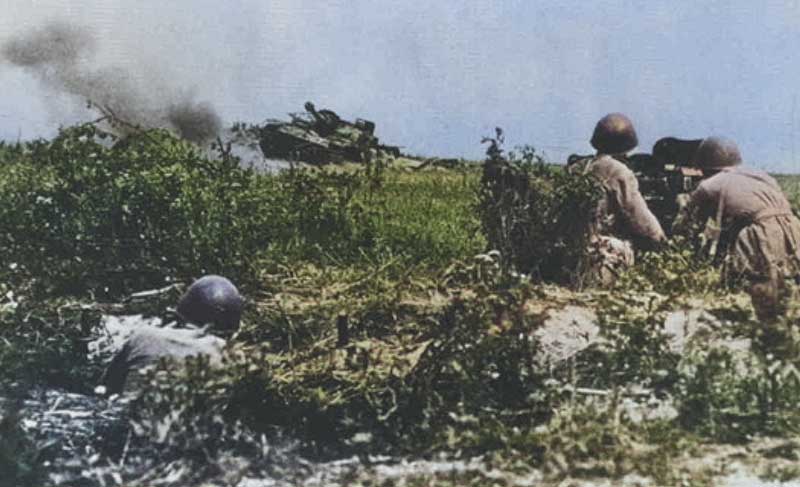
It was not until 5 July 1943 that Hitler ultimately resolved to initiate Zitadelle, by which time the operation had expanded from a restricted counteroffensive to encompass 60 percent of all German armor on the Eastern Front. The objective designated to Manstein's Heeresgruppe Süd in Operation Zitadelle was to breach the section of the Voronezh Front, currently commanded by Vatutin, occupied by the 6th Guards Army, and progress directly northward towards Oboyan. Kursk, the primary goal, lay approximately 120 km (75 miles) from the German front line.
At Kursk, Manstein's troops would join with General Oberst Walter Model's Army Group 9 advancing south from the Orel salient. Manstein designated Hoth's 4th Panzerarmee as his primary focus, positioning XLVIII Panzerkorps on the left flank and Hausser's II SS-Panzerkorps on the right flank. Following three months of reconstruction, these two corps initiated the offensive with 925 tanks and 170 assault guns, establishing Hoth's 4. Panzerarmee as the most formidable German armored strike force ever organized in the Soviet Union. Manstein instructed Armeeabteilung Kempf to conduct a supporting assault on the right flank of the 4. Panzerarmee to expand the initial breach and to counter the anticipated response of the Soviet armored reserves.
Kempf deployed the III Panzerkorps, comprising 369 tanks and assault guns, to support the attack against the Soviet 7th Guard Army. Manstein recognized that Zitadelle would present a significantly more formidable challenge than the March battles, especially as his three attacking corps would need to breach three heavily fortified zones defended by fully operational guards’ units, followed by counterattacks from one or more Soviet tank armies. To maximize the advantages for his assault units, he leveraged his experience with Soviet fortified belts at Sevastopol to ensure ample artillery and engineering support. Fliegerkorps VIII was anticipated to constrain Soviet reserves and disrupt enemy troop concentrations, as it had in prior offensives.
Initially, Manstein deployed only 14 of the 42 divisions in Heeresgruppe Süd for the Zitadelle offensive. The Army Group Hollidt, rebranded as the new Army High Command 6, maintained control of the Mius River line with 12 divisions, while General Oberst Eberhard von Mackensen's 1st Panzer Army secured the Donets River front with 11 divisions.
To execute Zitadelle, Manstein was required to concentrate 85 percent of his available armor on a narrow 50 km (31-mile) attack front, while Hollidt and Mackensen defended over 200 km (120 miles) of front with minimal armor support. Manstein had successfully undertaken this type of risk in 1942, when the Soviets were similarly dispersed, but he was tardy in recognizing that the Red Army of 1943 had evolved into a significantly more formidable force.
Following a preliminary assault on 4 July to eliminate the 6th Guards Army's combat outposts, Hoth's 4th Panzer Army commenced its principal offensive at 0400 hours on 5 July. Manstein anticipated that most of the assault divisions would arrive at the Soviet secondary defensive line near the Psel River (approximately 45 km [28 miles] north of the initial line) by the conclusion of the first day, drawing on the historical capacity of Panzer divisions to penetrate Soviet fortifications. However, the XLVIII Panzerkorps only managed to advance a maximum of 5 km (3 miles) on the first day, failing to breach the Soviet primary defensive line. In the center, Hausser's II SS-Panzerkorps successfully breached the initial defensive line and advanced up to 20 kilometers (12 miles), although with significant casualties. On the right, III Panzerkorps achieved modest advances of 3-6 kilometers (2-4 miles) against the 7th Guards Army.
Manstein and Hoth were astonished by the challenges encountered on the initial day, as the Panzers had consistently succeeded in achieving a breakthrough. The Soviets had undoubtedly concentrated anti-tank defenses, minefields, artillery, and infantry fortifications in sufficient densities to impede Manstein's approach to Bewegungskrieg.
On 6 July, Hoth and Kempf persisted with their assaults, but it became evident that Heeresgruppe Süd was engaged in an extended battle of attrition rather than the fluid maneuver warfare favored by Manstein. Hausser's II SS-Panzerkorps continued its advance, but the XLVIII Panzerkorps faced significant challenges on the left flank. By 9 July, when it reached within 26 km (16 miles) of Oboyan, its strength was nearly exhausted. By that date, Kempf's offensive had also lost momentum and failed to safeguard the right flank of Hausser's corps. Kempf's offensive compelled Vatutin to deploy the 1st Tank Army prematurely, prompting the Stavka to mobilize the 5th Guards Tank Army and the 5th Guards Army to definitively halt Hoth's advance.
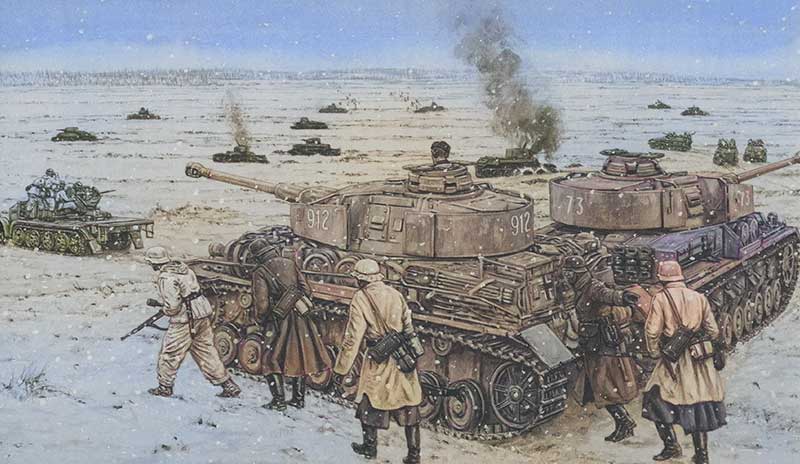
In Operation Gallop, Vatutin's Southwest Front deployed Mobile Group Popov, comprising four tank corps, to disrupt Heeresgruppe Don's supply lines and advance towards the Dnepr River. They almost succeeded, but depleted their fuel supply prior to achieving their goals. On the morning of 20 February 1943, Manstein initiated his counteroffensive, utilizing rapid movement to encircle Popov's four immobilized tank corps situated between Krasnoarmeyskoye and Stepanovka. Within a mere three days of combat, the XL Panzerkorps decisively defeated successive Soviet tank corps, culminating in the annihilation of Popov's command. Despite the Germans' insufficient infantry to effectively encircle these Kessel, resulting in the escape of numerous Soviet troops, they were compelled to relinquish all their equipment. A mixed Kampfgruppe from the 7th Panzer Division has encircled a portion of the Soviet 10th Tank Corps. Two German PzKpfw IVF2 tanks establish a rapid blocking position alongside several Panzergrenadiere, while a mobile flak unit creates an additional blocking formation on their left flank. Devoid of fuel and ammunition, the Soviet tankers can no longer mount effective resistance; some surrender, while the majority flee on foot into the distant woods. Manstein's Kessel tactics did not necessitate substantial armored units; rather, they depended on rapidity and effective coordination to outmaneuver their more formidable adversaries.
Manstein redeployed XXIV Panzerkorps from 1. Panzerarmee to bolster Hoth's weakening offensive. It was evident that Zitadelle had failed, as Model's AOK 9 could not penetrate north of Kursk and transitioned to a defensive stance. On 12 July, Hoth made a final attempt to penetrate Prokhorovka, successfully defeating the 5th Guards Tank Army; however, the 4th Panzerarmee was exhausted.
Hitler assembled Manstein and Kluge in Rastenberg the day following Prokhorovka to declare the suspension of Operation Zitadelle. Manstein insisted that his offensive persisted, asserting, “Victory on the southern front of the Kursk salient is attainable." The enemy has utilized nearly all his strategic reserves and has sustained significant damage. Ceasing action at this juncture would squander the opportunity for triumph.
However, Hitler recognized that the offensive could no longer encircle significant Soviet formations and was merely depleting the Wehrmacht's valuable armored reserves in a futile battle of attrition. Hitler instructed Manstein to relocate the 1. SS-Panzergrenadier-Division, "Leibstandarte SS Adolf Hitler," to Italy following the Allied invasion of Sicily on 10 July and permitted Heeresgruppe Süd to retreat to its initial defensive positions at the commencement of Operation Zitadelle.
Manstein's troops incurred 29,102 casualties during the offensive, comprising 4,759 fatalities. Despite Heeresgruppe Süd reporting a total of only 190 tanks lost during the offensive, fewer than half of its armored units were operational by 15 July. Vatutin's Voronezh Front and reinforcements from the Steppe Front incurred more than 90,000 casualties, comprising 18,097 fatalities. The Soviet Union incurred losses of 1,254 tanks, out of a total of 2,924 deployed in this sector. Although Manstein inflicted losses exceeding three to one on Vatutin's front and advanced a maximum of 38 kilometers (24 miles), he did not accomplish his operational objective of encircling any enemy units.
World War II - Retreat to the Dnepr
After the ending of the major offensive, Manstein subsequently stated that he “anticipated inflicting sufficient damage on the enemy during Zitadelle to secure a respite in this sector of the front." On 17 July, the Soviets initiated probing assaults along the Donets and Mius rivers, establishing minor bridgeheads. Hollidt's forces were under significant pressure, and he was unable to prevent two Soviet mechanized corps from crossing the Mius. Unable to breach the formidable Soviet defenses surrounding Kursk, Manstein perceived these minor Soviet offensives as an ideal opportunity to execute another “backhand blow” that could rectify the shortcomings of Operation Zitadelle.
In his enthusiasm to execute another Bewegungskrieg maneuver, Manstein committed the critical error of underestimating his adversary. Convinced that Vatutin's forces no longer posed an immediate danger following Zitadelle, Manstein deployed the two remaining divisions of II SS-Panzerkorps, in addition to III and XXIV Panzerkorps, to eliminate the Mius River crossings. By late July, Manstein had relocated most of his armored forces southward; however, he did not comprehend that these probing assaults were distractions designed to divert his focus from the crucial Belgorod-Kharkov region. In his memoirs, Manstein acknowledged that this decision was "disastrous," yet he bluntly attributed it to Hitler's insistence on retaining control of the Donets Basin.
Following the repulsion of the Soviet incursion at Izyum, Hausser's II SS-Panzerkorps launched an assault on the Soviet bridgehead situated across the Mius River on 30 July. Remarkably, Hausser encountered similar lethal anti-tank defenses as those at Kursk, resulting in the loss of over 70 tanks on the initial day. Hausser succeeded in eliminating the Soviet bridgehead and capturing 18,000 prisoners after three days of intense combat. Although it was a tactical victory, the II SS-Panzerkorps suffered a significant loss, with fewer than 70 operational tanks and assault guns remaining.
Unobserved by Manstein's staff, Vatutin promptly replenished his losses following Zitadelle and concentrated over 800 tanks from the 1st Tank Army and the 5th Guards Tank Army in a confined 12 km (7-mile) sector northwest of Belgorod, adjacent to the demarcation between 4. Panzerarmee and Armeeabteilung Kempf. Marshal Georgiy Zhukov and the Stavka initiated preparations for Operation Rumantsyev prior to the conclusion of Zitadelle, equipping Vatutin with a formidable force to reclaim Kharkov and advance toward the Dnepr River.
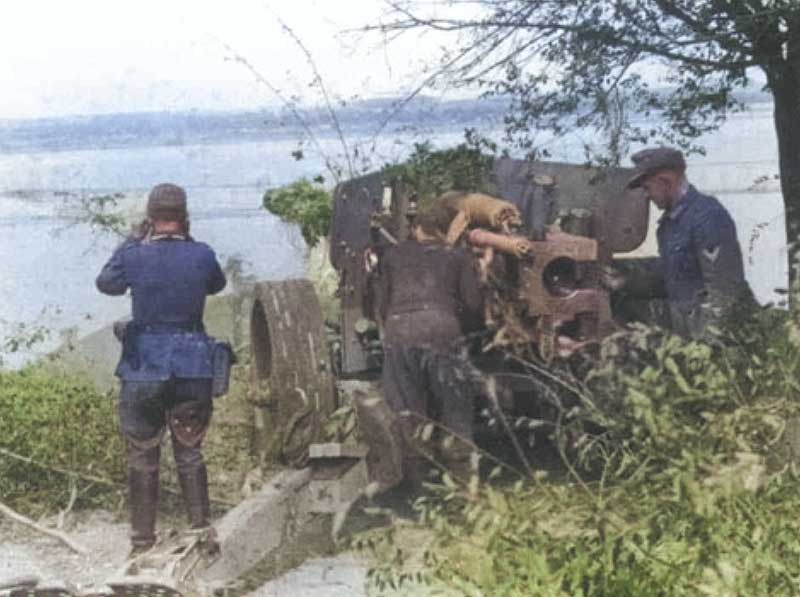
Zhukov pursued a meticulously orchestrated and adequately supported operation, avoiding any amateurish offensives to mitigate the risk of potential “backhand blows” from Manstein. The offensive commenced on 3 August with an extensive two-hour artillery bombardment targeting the 4. Panzerarmee's LII Armeekorps. To execute the counteroffensive on the Mius, Manstein diminished Hoth's forces to merely four infantry and three Panzer divisions, enabling the Soviet 5th Guards Army to swiftly breach Hoth's vulnerable defenses. Vatutin subsequently deployed two tank armies into the breach, and Hoth's diminished Panzer divisions were unable to halt the assault. By nightfall on the initial day, Vatutin's spearheads had progressed up to 26 kilometers (16 miles). Vatutin exerted significant pressure on Armeeabteilung Kempf's positions north of Belgorod through assaults by the 53rd and 69th Armies.
Manstein was astonished by the ferocity of Vatutin's assault, which obliterated three infantry divisions on the initial day. He commanded the III Panzerkorps and the 2. SS-Panzergrenadier-Division “Das Reich” to withdraw from the Izyum sector; however, prior to their arrival, the Soviet 69th Army seized Belgorod on 5 August, and the 6th Guards Army annihilated 7,000 German soldiers in the Borisovka Pocket. The vanquished remnants of Hoth's 4th Panzer Army withdrew westward along the Vorskla River valley, creating a substantial unguarded breach between itself and Army Detachment Kempf. On 7 August, Panzer units from the Mius front began to arrive in Kharkov, and by then, the 5th Guards Tank Army's spearheads were within 25 km (16 miles) of the city. From 8 to 12 August, Hoth and Kempf succeeded in re-establishing a semblance of a line; however, these actions merely impeded Vatutin's progress.
As Manstein believed he could regain control, the Soviet Southwest Front launched an assault on the 1. Panzerarmee in the Donbas, while the South Front targeted AOK 6 on the Mius. Both assaults were formidable and rapidly advanced, as both forces had relocated their armor northward to protect Kharkov. Simultaneous intense Soviet assaults confronted Manstein's four armies, prompting the deployment of all his reserves. Instead of expending time reallocating armor to the Mius front, he retained his elite units at Kharkov, aiming to deplete Vatutin's resources.
With victory imminent, Vatutin became somewhat overconfident and commanded a succession of expensive frontal assaults, enabling the Germans to inflict nearly debilitating losses on the 5th Guards Tank Army. Nonetheless, Manstein instructed Kempf to evacuate Kharkov (contrary to Hitler's directives) prior to encirclement, resulting in the city's capture on 22 August. The triumph incurred over 156,000 casualties and the loss of 1,864 tanks for Vatutin; however, Operation Rumantsyev fulfilled its objectives and facilitated a swift advance to the Dnepr River.
Hitler dismissed Kempf for the loss of Kharkov the day after AOK 6 began its retreat from the Mius River under intense pressure. General der Infanterie Otto Wöhler assigned Armeeabteilung Kempf as AOK 8. On August 27, Hitler traveled to Vinnitsa to discuss the recent defeats with Manstein. Manstein urged Hitler to implement a “flexible defense” strategy that permitted tactical withdrawals to concentrate forces for counterattacks, parallel to the “backhand blow”; however, Hitler prohibited any further retreats. Manstein additionally implored Hitler to evacuate AOK 17 from the Kuban to allocate some of its 21 divisions to bolster Heeresgruppe Süd, but Hitler declined this request as well.
By the conclusion of August, Manstein was facing defeat on nearly all fronts. Heeresgruppe Süd incurred 133,000 casualties in August while receiving merely 33,000 replacements. The five Soviet fronts assaulting Heeresgruppe Süd had incurred significant casualties, yet they retained over 2.6 million personnel and 2,400 tanks, in contrast to Manstein's 800,000 troops and 500 tanks. Manstein used minor counterattacks to delay the Soviet armored advances, but after the defeat at Kharkov, he realized that the only way to halt the formidable Soviet offensives was to establish a new defensive line along the Dnepr River.
On September 8, Hitler traveled to Zaporozhe to meet once more with Manstein, who implored for authorization to retreat behind the Dnepr, but Hitler declined. Hitler authorized the evacuation of the Kuban but mandated that AOK 17 defend the Crimea rather than reinforce Manstein's forces. It was not until September 15, as Heeresgruppe Süd's defenses deteriorated almost universally, that Hitler permitted Manstein to withdraw behind the Dnepr. Hitler opted to reassign Hollidt's AOK 6 to Kleist's Heeresgruppe A, thereby leaving Manstein with merely three armies to safeguard the Dnepr line between Kiev and Dnepropetrovsk.
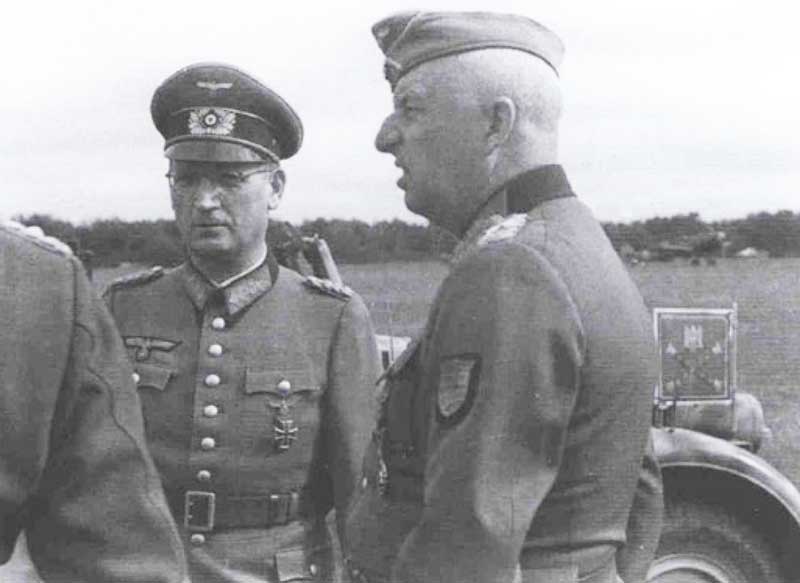
A few days later, the Stavka assigned Rybalko's reconstructed 3rd Guards Tank Army to Vatutin, rendering the matter theoretical. The Stavka tasked Rybalko exclusively with breaching the remaining debris from the 4th Panzer Army in his path and establishing a bridgehead across the Dnepr. In a remarkable demonstration of operational mobility, Rybalko progressed 160 km (100 miles) in two days and reached the Dnepr before the majority of the retreating German units.
On 22 September, Rybalko established a bridgehead over the Dnepr at Bukrin, followed by the 5th Guards Tank Army securing another bridgehead at Kremenchug on 29 September. Manstein had anticipated a respite once his fatigued troops were securely positioned behind the Dnepr, but he was astonished to discover that the Soviets had already breached the formidable barrier before his primary forces had reached safety. Instead of a reprieve, Manstein had to engage in a desperate battle to destroy the Soviet bridgeheads before they could gain strength.
World War II - The Loss of Kiev
Manstein's forces positioned themselves by late September 1943, with Hoth's 4th Panzer Army defending the Kiev region, Wöhler's Army Group 8 securing the territory between Cherkassy and Kremenchug, and Mackensen's 1st Panzer Army controlling the vicinity of Dnepropetrovsk. Despite suffering significant losses during the retreat to the Dnepr, certain Panzer units remained formidable, and Manstein endeavored to deploy them to eradicate the Soviet bridgeheads. Hoth used XLVIII Panzerkorps to launch a powerful counteroffensive that nearly destroyed the Bukrin bridgehead on 27 September, and assigned XIII AK to attack the 38th Army's bridgehead at Lyutezh, north of Kiev. Following the retreat behind the Dnepr, Manstein's headquarters was initially located in Kirovograd but was subsequently relocated to Vinnitsa.
In October, the Stavka devised a new strategy to capitalize on the bridgeheads over the Dnepr and encircle Wöhler's AOK 8, deemed the vulnerable point in Manstein's front. As Malinovsky's Southwest Front assaulted Dnepropetrovsk to immobilize the 1st Panzer Army, Konev's Steppe Front initiated an offensive from the Kremenchug bridgehead against Wöhler's right flank, while Vatutin's Voronezh Front, subsequently designated as the 1st Ukrainian Front, launched an assault from the Bukrin bridgehead alongside Rybalko's 3rd Guards Tank Army. Konev's front achieved a significant victory at Kremenchug, decimating LVII Panzerkorps and subsequently advancing nearly 70 km (44 miles) to the periphery of Manstein's headquarters at Kirovograd with the 5th Guards Tank Army.
Malinovsky achieved notable success against the 1. Panzerarmee, seizing Dnepropetrovsk and Zaporozhe. However, XLVIII Panzerkorps, engaging Rybalko's armored units in a stalemate, hindered Vatutin's attempts to escape the Bukrin bridgehead. The Soviet offensive effectively repelled most of Wöhler's forces from the Dnepr, leaving only two corps to maintain the front between Kanev and Cherkassy.
At this point, Vatutin exhibited considerable adaptability alongside a profound comprehension of his adversary. He discreetly relocated the 38th and 60th Armies, along with Rybalko's armored units, 150 km (93 miles) northward to the Lyutezh bridgehead, while leaving some forces to persist in the engagement at the Bukrin bridgehead. On 1 November, Vatutin initiated vigorous diversionary assaults at Bukrin. Manstein dismissed reports of Soviet armor advancing to Lyutezh, considering the marshy terrain inappropriate for mechanized operations—an error reminiscent of the French misjudgment regarding the Ardennes Forest in 1940.
On 3 November at dawn, Vatutin initiated a substantial artillery barrage against the VII and XIII Army Corps surrounding the Lyutezh bridgehead. This assault completely surprised Manstein and Hoth, and before they could mount a coherent response, Rybalko's 3rd Guards Tank Army assaulted the faltering German front and routed three infantry divisions. Vatutin's forces swiftly advanced southward toward Kiev, leaving Hoth with almost no operational combat units in the region and necessitating his retreat. Manstein swiftly relocated XLVIII Panzerkorps from Bukrin, but it was insufficient, and Vatutin's forces seized Kiev on 6 November. Vatutin sustained the pressure, advancing his forces westward in pursuit, overwhelming Hoth's tenuous rearguards, and seizing Zhitomir on 12 November.
Manstein felt humiliated by Vatutin's deception and the easy loss of Kiev. Enraged, Hitler dismissed Hoth and appointed General der Panzertruppe Erhard Raus as his successor. The OKH promptly dispatched significant armored reinforcements to Manstein to reclaim Kiev. By 15 November, he had organized six Panzer divisions within the XXIV and XLVIII Panzerkorps to the southwest of Kiev, comprising a formidable total of 585 tanks. Manstein aimed to replicate the “backhand blow” by striking the flank of Rybalko's 3rd Guards Tank Army and subsequently reclaiming Kiev. Adverse weather and challenging terrain conditions hindered Manstein's counteroffensive, which successfully recaptured Zhitomir and caused approximately 30 percent casualties to Rybalko's forces. In contrast to previous counteroffensives, Luftwaffe assistance was negligible. On 25 November, Manstein halted the counteroffensive due to its inability to encircle any Soviet forces.
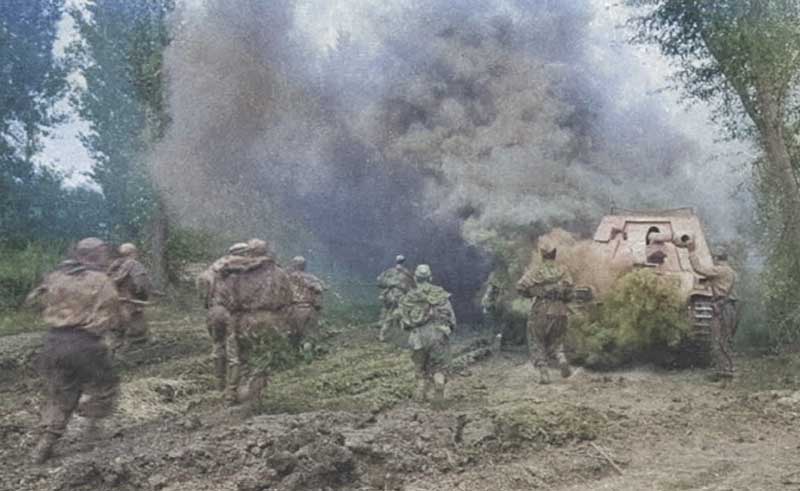
Notwithstanding the punishments inflicted by Vatutin since August, Manstein was able to glean insights from his adversary. He was especially impressed by the Soviet artillery divisions, which had effectively breached his defensive lines, prompting him to establish the 18th Artillery Division using available resources. Upon assembly, the division possessed 116 heavy-caliber artillery pieces. On 6 December, XLVIII Panzerkorps, aided by the 18th Artillery Division, assaulted the 60th Army at Radomyshl. The assault effectively isolated several Soviet rifle divisions and inflicted substantial casualties; however, the German forces were insufficiently robust to annihilate these units.
While advancing, XLVIII Panzerkorps unexpectedly encountered three Soviet tank corps near Meleni, resulting in an extended tank battle that caused significant casualties for both factions. By 23 December, Manstein was compelled to terminate the counteroffensive, having been unsuccessful in recapturing Kiev or annihilating Rybalko's armored forces; however, he maintained that the counteroffensive had severely weakened the 1st Ukrainian Front and impaired its capacity to initiate significant offensive operations for an extended period. Manstein once again underestimated his adversaries, resulting in an erroneous assessment of the situation.
Unbeknownst to Manstein, the Stavka expanded Vatutin's 1st Ukrainian Front to a total of 924,000 troops, launching a substantial offensive against the 4. Panzerarmee on the morning of 24 December. Vatutin launched an assault with seven armies, completely overpowering Raus' significantly outnumbered troops. Despite the urgent counteroffensives by XLVIII Panzerkorps, the Soviet 1st Tank Army and 3rd Guards Tank Army swiftly advanced eastward, demonstrating that Manstein's counteroffensive had not incapacitated them. On 31 December, Rybalko's forces reclaimed Zhitomir. Once more, Manstein's left flank was compromised and vulnerable, with numerous Soviet armored units infiltrating the breach—the year concluded similarly to its inception.
World War II - The Korsun Pocket
Manstein recognized that the only method to reinforce his compromised left flank was to reallocate forces from Hube's 1st Panzer Army on his right flank, as he had previously done in the Donbas. However, Hitler understood that a complete transfer of the 1. Panzerarmee would jeopardize the Nikopol bridgehead, a location he steadfastly refused to evacuate. However, Manstein commenced the discreet repositioning of segments of Hube's army on 1 January 1944. Through this dangerous transfer, Manstein aimed to liberate sufficient forces to secure his left flank, but he obscured the magnitude of this transfer from the OKH and the reality that he was willingly relinquishing territory on the Dnepr bend.
The transfer forced the beleaguered AOK 6 to take charge of the front that the 1. Panzerarmee had previously held. Encouraged by the retreat of Hube's forces, Konev initiated a significant offensive on 5 January, advancing AOK 8 by 40 km (25 miles) and seizing Kirovograd on 8 January. The deployment of Hube's forces momentarily allowed Heeresgruppe Süd to impede Vatutin's assault; however, upon Katukov's 1st Tank Army approaching within 65 km (40 miles) of Manstein's command in Vinnitsa, he retreated to Proskurov on 5 January. Katukov subsequently altered his course and advanced directly south toward Uman, creating a division between Panzerarmee and AOK 8.
Hitler undoubtedly noticed the comprehensive transfer of the 1st Panzer Army and the relinquishment of territory along the Dnepr bend, summoning Manstein for a personal report at Rastenberg on 4 January 1944. Hitler was enraged that Manstein had disregarded his explicit directives against retreating from the Dnepr bend and prioritized his own authority over Manstein's military rationale. Manstein worsened the tense interview by proposing the appointment of a commander-in-chief for the entire Eastern Front. Hitler recognized that Manstein viewed himself as the most suitable candidate for the role and perceived this proposal as a personal insult to his authority. Hitler abruptly severed communication with Manstein, indicating a clear deterioration in their relationship.
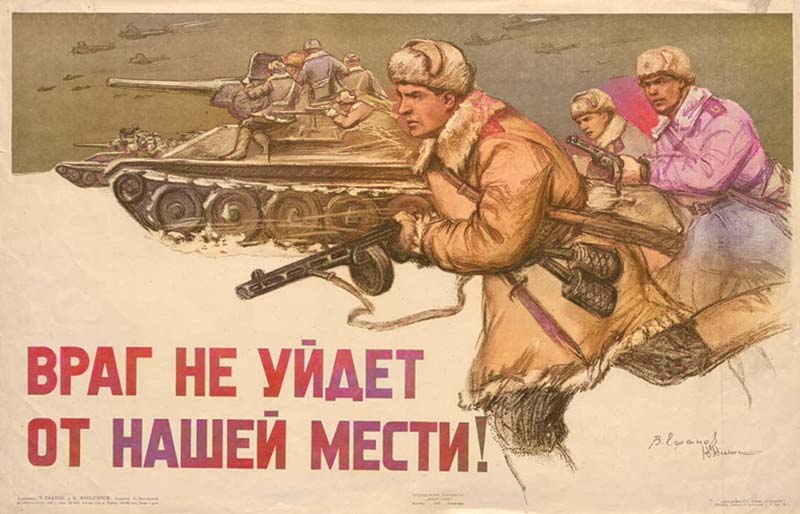
Upon his return to Proskurov, Manstein devised Operation Watutin, a coordinated counteroffensive by the 1st Panzer Army and Army Group 8 aimed at encircling and annihilating Katukov's 1st Tank Army. However, even if Manstein managed to halt Katukov's advance at Uman, the intersection between Hube's forces and Wohler's AOK 8 would remain vulnerable in the Korsun salient. XLII AK, part of 1. Panzerarmee, and XI AK, part of AOK 8, maintained the final German position on the Dnepr. Despite Manstein's request to retreat from the Korsun salient prior to the Soviet encirclement, Hitler prohibited him from abandoning the final position on the Dnepr. Zhukov arrived in mid-January 1944, with the Stavka already focused on Korsun, to coordinate a pincer maneuver between Vatutin's 1st Ukrainian Front and Konev's 2nd Ukrainian Front, with the aim of establishing another successful encirclement similar to Stalingrad.
Recognizing that the Soviets would encircle the Korsun salient, Manstein had no choice but to deploy his remaining mobile reserves near the salient or launch a spoiling attack. He ultimately resolved to undertake both actions. Manstein anticipated that Operation Watutin would postpone Vatutin's offensive; consequently, he instructed Wöhler to maintain two Panzer divisions on standby to repel any Soviet incursion on the eastern flank of the salient by Konev's troops. To provide additional security, Manstein established a specialized mobile fire brigade, named schwere-Panzer-Regiment 'Bäke', to address any Soviet incursions. This improvised unit comprised a battalion of Panther and Tiger tanks, along with artillery, engineers, and infantry, rendering it the most formidable formation remaining in Heeresgruppe Süd.
Operation Watutin commenced on 24 January; however, prior to the counteroffensive's advancement, Konev and Vatutin initiated their own probing assaults on the Korsun salient. The following morning, Konev assembled seven rifle divisions, 323 tanks, and substantial artillery to confront the German 389. Infanterie Division, which was defending a 21 km (13-mile) segment of the front at the eastern edge of the salient. Following the division's disintegration, Konev advanced the 5th Guards Tank Army to take advantage of the opening in the eastern front. Wöhler's Panzer reserves launched a counteroffensive but were unable to halt the Soviet incursion.
On the western flank of the salient, Vatutin launched an assault on 26 January with five rifle divisions; however, Hube's meticulously organized VII AK resisted successfully. Subsequently, demonstrating operational flexibility reminiscent of blitzkrieg's peak, Vatutin maneuvered a mobile unit into a breach formed by a supporting assault, and once these tanks penetrated the German rear, he advanced the 6th Tank Army in their wake. On 28 January, the 5th Guards Tank Army and the 6th Tank Army converged at Zvenigorodka, encircling 56,000 German soldiers from the XI and XLII AK within the Kessel.
Manstein orchestrated a Luftwaffe airlift that delivered sufficient supplies to stop an imminent collapse of the encircled forces. He was resolute in avoiding the errors of Stalingrad and swiftly orchestrated a relief operation by redeploying III Panzerkorps and schwere-Panzer-Regiment “Bäke” immediately upon the completion of its duties in Operation Watutin. He also instructed XLVII Panzerkorps to orchestrate a relief offensive utilizing its three Panzer divisions. Fortunately, Zhukov instructed Konev and Vatutin to focus their efforts on diminishing the Kessel, enabling Manstein to establish a screening force between the 1. Panzerarmee and AOK 8. Manstein organized the encircled forces into Gruppe Stemmermann and withdrew them to a more defensible perimeter, successfully maintaining control over the area surrounding the Korsun airfield for the next two weeks.
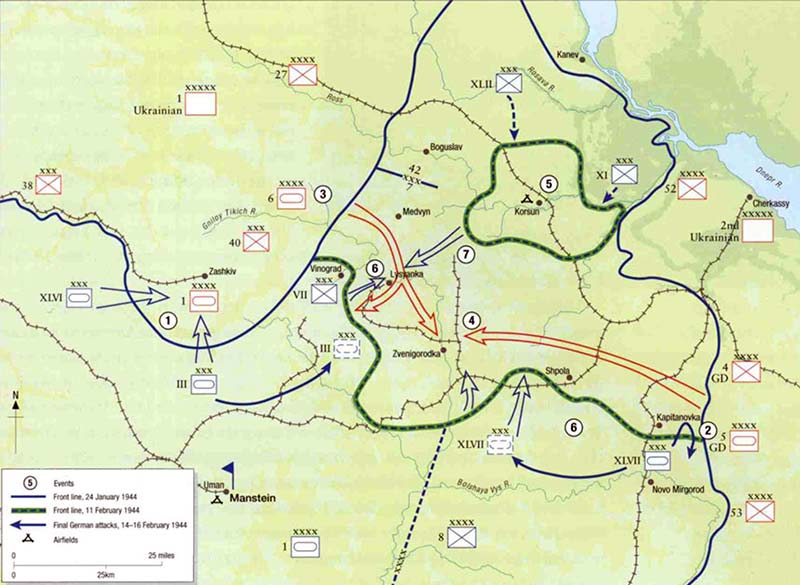
- On 24 January 1944, Manstein initiates Operation Vatutin to encircle and annihilate the Soviet 1st Tank Army prior to its arrival at his headquarters in Uman.
- On 25 January 1944, Konev launched an assault on the eastern flank of the Korsun Salient, utilizing the 4th Guards Army and the 5th Guards Tank Army. The counterattacks by XLVII Panzerkorps do not prevent him from attaining a breakthrough.
- On 26 January 1944, Vatutin launched an assault on the western flank of the Korsun Salient, utilizing the 40th Army and the 6th Tank Army. Despite the German VIIAK successfully repelling the primary assault, Soviet armor capitalizes on a breach between VII and XIII AK.
- On 28 January 1944, the 5th Guards Tank Army and the 6th Tank Army converged at Zvenigorodka, encircling the XI and XLII Army Corps within the Korsun Pocket.
- From 1 to 10 February 1944, the German forces within the pocket retreated inward to establish a hedgehog defense around the airfield. Gruppe Stemmermann organizes the two corps.
- 1 February 1944: Operation Wanda, the humanitarian initiative, commences with assaults by III and XLVII Panzerkorps to breach the encirclement. Despite the Germans advancing 35–40 km (22–31 miles) in the subsequent week and the III Panzerkorps reaching Lysanka, Vatutin, and Konev, they expedited reinforcements to the region, effectively obstructing any further progress.
- On the night of 16-17 February 1944, Gruppe Stemmermann executed an extraordinary night breakout operation, successfully traversing the final 7 kilometers (4 miles) to reach the lines of III Panzerkorps. Approximately two-thirds of the encircled German forces manage to evade capture by relinquishing their vehicles and heavy equipment.
Operation Wanda, the German humanitarian initiative, commenced on 1 February when XLVII Panzerkorps, equipped with 40 tanks, launched an offensive northward against Konev's troops. The distance separating the Kessel from the relief forces was 35-40 km (22-25 miles), yet severely muddy conditions significantly hindered German mobility. On 3 February, the formidable III Panzerkorps, comprising 164 tanks, initiated an assault on Vatutin's forces. The Soviet resistance was intense, as Konev and Vatutin had deployed six rifle corps, three tank corps, and one mechanized corps between the relief force and the Kessel. After a week of assaults, neither German corps had progressed beyond 20–25 kilometers (12–16 miles). Manstein and his staff advanced to Uman in his command train to oversee the operation and guarantee optimal coordination between Hube and Wöhler.
During the relief operation, Manstein argued with Hitler about the necessity for Gruppe Stemmermann to carry out a breakout as the relief forces approached. Hitler remained convinced that he could maintain Korsun once he established a connection. Manstein recognized that Gruppe Stemmermann was facing a time constraint and commanded III Panzerkorps, augmented by the 1. SS-Panzer-Division “Leibstandarte SS Adolf Hitler," to launch another offensive on 11 February. III Panzerkorps advanced 15 km (9 miles) and reached Lysanka, located 7 km (4 miles) from the encircled forces in the Kessel; however, Zhukov deployed multiple tank corps that obstructed any further progress. On that day, Gruppe Stemmermann relinquished control of Korsun airfield.
Despite Hitler's lack of approval for a breakout, Manstein directly communicated with Stemmermann on February 16, instructing him to execute it that evening. The Germans within the encirclement skillfully orchestrated a nocturnal exfiltration, successfully achieving considerable tactical surprise, which allowed most combat forces to breach the Soviet cordon and reach III Panzerkorps at Lysanka, albeit at the cost of abandoning their vehicles and artillery. The Soviets detected the breakout and deployed their cavalry and artillery against the German support forces, resulting in the annihilation or capture of most of them. 40,423 Germans managed to escape the Kessel, while 19,000 faced either death or capture.
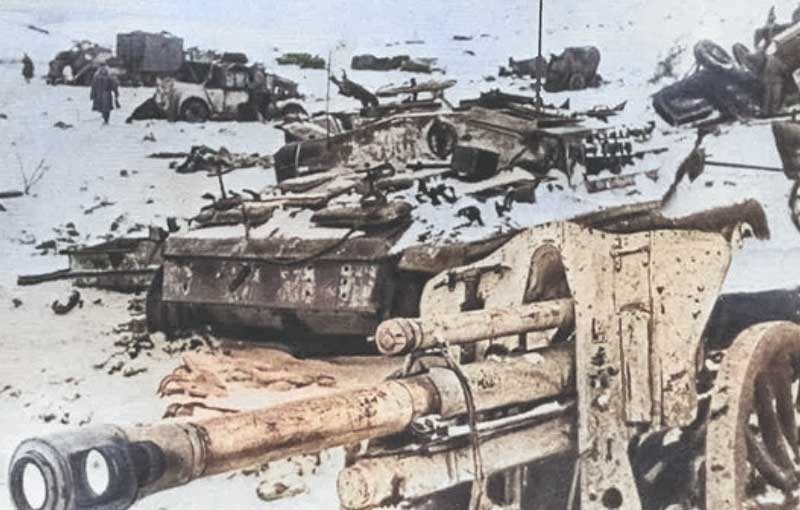
Although the breakout from the Korsun pocket diminished the magnitude of the Soviet triumph, it remained evident that all six divisions that fled were decimated. In fact, the 5. SS-Panzer-Division "Wiking" was the only division that underwent reconstruction. Moreover, the relief forces incurred more than 4,000 casualties and lost approximately 240 tanks and assault guns. Manstein's assigned fire brigade, schwere-Panzer-Regiment "Bäke," emphasized the destruction of approximately 400 Soviet tanks during its month-long occupation; however, by late February, its operational tank count had dwindled to such an extent that it was disbanded. While Manstein's rescue operation preserved lives temporarily, it effectively depleted the final mobile reserves of Heeresgruppe Süd.
World War II - Hube's Pocket
Following the conclusion of the Korsun operation, Manstein anticipated that Vatutin would persist in his offensive against the vulnerable left flank of Heeresgruppe Süd, while Konev relentlessly attacked AOK 8. Zhukov redirected the primary offensive toward the perimeter of Raus' 4th Panzer Army and Hube's 1st Panzer Army near Tarnopol, while Konev targeted Hube's right flank. Following the breach of Hube's flanks, Vatutin and Konev each led three tank armies in extensive mobile operations to encircle the entire 1. Panzerarmee. The Stavka resolved to annihilate Heeresgruppe Süd and took the extraordinary measure of concentrating all six of its tank armies against a single army of Manstein. Five days prior to the commencement of the offensive, Ukrainian partisans mortally injured Vatutin. Zhukov assumed direct command of the First Ukrainian Front.
Even if Manstein had been aware of Zhukov's intentions, there was little he could have done to impede them, considering the deteriorated state of Heeresgruppe Süd. In early March, Heeresgruppe Süd maintained an 843 km (524-mile) front with merely 37 and a half understrength divisions, its armored reserves depleted following the Korsun relief operation. Zhukov's 1st Ukrainian initiated the offensive on 4 March, followed by Konev's Front the subsequent day. Despite fierce German resistance, Zhukov and Konev managed to achieve breakthroughs, enabling them to deploy their armored divisions. Soviet armor encircled Hube's forces on both flanks, positioning the 1st Panzer Army in a salient near Kamenets-Podolsky. Manstein had to move his headquarters again, this time to Lwow. By mid-March, the Soviet forces had almost completely encircled the 1st Panzer Army, yet Hitler denied Manstein's appeals for the evacuation of the salient. The 6th Tank Army seized Khotin on 28 March, sealing the trap and obstructing Hube's escape route.
The Kessel encircled nearly the entire 1. Panzerarmee, which numbered approximately 200,000 personnel and 20 divisions. At that time, Manstein lacked the resources to conduct a relief operation and could only re-establish a tenuous front across the Carpathians by deploying the Hungarian 1st Army. While en route to Berlin, he informed Hitler that his preferred 1. SS-Panzer-Division “Leibstandarte SS Adolf Hitler” and 2. SS-Panzer-Division “Das Reich” were encircled within the Kessel and would be doomed without reinforcements to facilitate a rescue operation. Hitler reluctantly consented to deploy SS-Obergruppenführer Willi Bittrich's II SS-Panzerkorps from the west to conduct a rescue operation, yet he insisted that Hube's encircled forces remain stationary until the rescue contingent restored their supply lines.
Manstein concurred, yet he recognized that the Luftwaffe could not support such a substantial force via air logistics. Upon his return to headquarters, Manstein ignored Hitler's directives and directed Hube to commence the westward movement of the Kessel to connect with the 4. Panzerarmee and the anticipated relief contingent. Hube contested Manstein's position, noting that the distance to the German lines in the west was approximately 100 km (62 miles), while the distance to the Romanian IV Army in the south was half that, despite the increased difficulty in establishing a new front line. Once again, Manstein had to work with a stubborn subordinate who viewed his directives as mere recommendations.
Zhukov committed two significant errors during the encirclement of the Panzerarmee: he anticipated that the besieged forces would attempt a breakout to the south, and he underestimated the determination and ingenuity of Generaloberst Hans-Valentin Hube. Rather than remaining passive and awaiting assistance as Paulus did, Hube launched an offensive against the relatively weakly defended western flank of the Kessel and commenced an outward advance.
Hube restructured his forces and maintained sufficient operational troops and tanks to continue advancing, which astonished Zhukov, as previously encircled German units had typically remained stationary to secure airfields for resupply. Since the Luftwaffe was unable to supply Hube's army, remaining in position was unsuccessful. When the breakout operation commenced on 27 March, it seemed to progress favorably; however, Manstein would not witness its resolution. Hitler recognized that Hube was surrendering territory instead of awaiting rescue and concluded that Manstein had disobeyed his directives one too many times.
Manstein received orders to report to Hitler at the Obersalzberg on 30 March, where he learned that Walther Model would be his successor. Hitler mitigated the reprimand by granting Manstein the Swords to his Ritterkreuz and informed him that “the era for grand-scale operations in the east, for which I had been particularly qualified, has now concluded." What mattered now was to determinedly hold onto what we possessed. Hitler expressed that he considered Manstein one of his “most competent commanders” and indicated that he would assign him a new task shortly. In a postscript to Manstein's final operational choices, Hube's forces successfully breached Soviet lines and connected with Bittrich's relief contingent on 6 April, thus preventing Zhukov's victory.
Erich von Manstein and the Opposing Commanders
Manstein resisted several Soviet commanders, yet his most relentless adversary was Nikolai Vatutin. Although originating from a peasant background and being 14 years junior to Manstein, Vatutin demonstrated equal proficiency in executing maneuver warfare. Vatutin emerged as Manstein's adversary, vanquishing him at Soltsy in August 1941, subsequently pursuing him throughout Ukraine in 1943, and ultimately seizing Kiev through a masterful maneuver. Manstein achieved victory over Vatutin only once, in February 1943, after which Vatutin adapted his strategies to prevent the fragmentation of his spearheads.
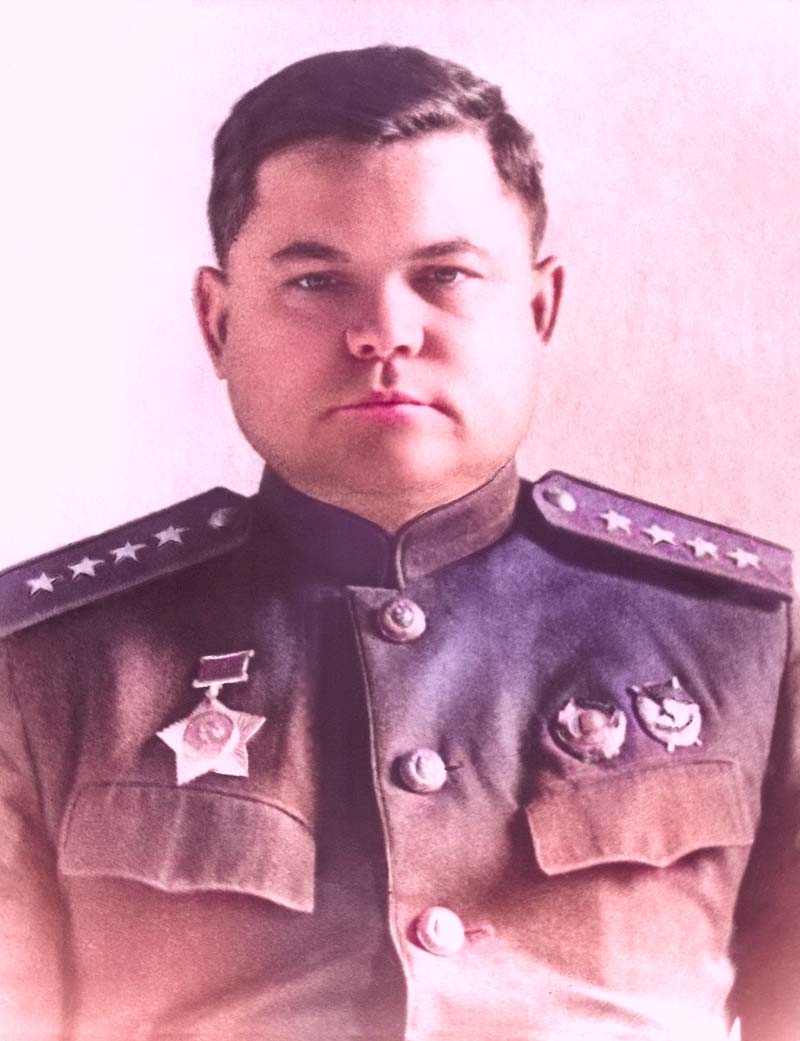
Like Manstein, Vatutin served as a General Staff officer prior to the war and played a significant role in mobilization and military strategies during the late 1930s. Vatutin embraced politics, joining the Communist Party and earning the respect of both Stalin and Zhukov. Vatutin was instrumental in delaying the German advance on Leningrad and subsequently encircling the initial significant German encampment at Demyansk. In July 1942, Vatutin's Southwest Front advanced southward, subsequently thwarting Manstein's attempt to relieve the Stalingrad Kessel and nearly encircling Heeresgruppe Don. Vatutin's only major mistake against Manstein occurred in February 1943, when he failed to recognize the impending German counteroffensive until his overstretched forces were facing decimation. In contrast to Manstein, Vatutin assimilated lessons from this defeat and accurately assessed his adversary.
At Kursk, Vatutin successfully halted Manstein's formidable, armored advances well before their targets and subsequently launched a counteroffensive that decimated the German front. Vatutin unexpectedly confronted Manstein at Belgorod in August and skillfully outmaneuvered him at Kiev in December. Vatutin exhibited significant adaptability during the Korsun offensive, capitalizing on transient opportunities instead of consolidating failures, leading to his armored forces encircling two German corps.
However, Vatutin was unable to prevent Manstein from reclaiming the Korsun Pocket, and this partial success resulted in the depletion of Manstein's remaining operational reserves. Had Ukrainian partisans not critically injured Vatutin following Korsun, he would undoubtedly have significantly contributed to the annihilation of Manstein's command during the Kamenets-Podolsky offensive. Nonetheless, Vatutin illustrated that Manstein's approach to Bewegungskrieg was ineffective against a resolute adversary and that the Red Army possessed commanders capable of executing a form of maneuver warfare that even astonished Manstein.
When the War was over for Erich von Manstein
After his removal from command, Manstein went back to his family in Dresden and joined the Führer Reserve. As the situation worsened on all fronts, he expected orders to return to duty, but none came. Hitler believed that Manstein lacked the ability to adhere to his stand-fast orders and execute an extreme defense, rendering him ill-suited for Germany's predicament by mid-1944. Conditions compelled the Wehrmacht to abandon Bewegungskrieg in favor of Stellungskrieg.
While remaining inactive in Dresden, Manstein was aware of the conspiracy within the military to depose Hitler. Representatives of the conspiracy approached Manstein three times in 1943, including a meeting with Major Claus von Stauffenberg. Manstein consistently considered the objections to Hitler's interference in military affairs yet declined to take any action against the regime. Manstein succinctly stated that “Prussian Field Marshals do not Mutiny” and resolutely adhered to his loyalty oath to Hitler. Oberst Eberhard Finckh and Oberstleutnant Schulze-Büttger, two senior staff officers at Heeresgruppe Süd, participated in the conspiracy and met their execution after Hitler's unsuccessful assassination attempt on July 20, 1944. Manstein was aware of the conspirators' intent to assassinate Hitler, yet he remained silent, thereby allowing the possibility of either collaborating with a new regime should the coup succeed or denying any involvement if it failed. Despite the lack of trust from Hermann Göring and Heinrich Himmler, Manstein did not attract significant suspicion following the failure of the conspiracy.
By late January 1945, Konev's 1st Ukrainian Front was almost at Manstein's threshold, prompting him to escape westward with his family. He retained enough influence to obtain two army trucks for transporting his personal effects, and along with his wife, son Rüdiger, and his adjutant, they proceeded westward to Hamburg. During his journey, Manstein halted in Berlin; however, Hitler declined to meet with him. Manstein continued his journey to Hamburg in search of Generalfeldmarschall Fedor von Bock, whom Hitler had also dismissed. They visited Groβadmiral Karl Dönitz, the new head of state following Hitler's suicide. Manstein anticipated that Dönitz would appoint him as the new commander-in-chief of the army; however, Dönitz selected Generalfeldmarschall Ferdinand Schömer instead. Disheartened, Manstein departed from Dönitz's headquarters without any results. On 5 May 1945, Manstein surrendered to Field Marshal Bernard Montgomery at the prestigious Hotel Atlantic in Hamburg after dispatching his adjutant to engage with the advancing British forces. They transported him to England as a prisoner of war on 26 August.
Manstein spent his initial year in captivity without incident, but in August 1946, he was transported to Nuremberg to join a specialized defense team, comprising Halder and Rundstedt, for the “OKW Trial." During the trial, Manstein attempted to obscure the complicity between the military and the Nazi regime, challenging that the SS bore exclusive responsibility for any war crimes. Manstein was interrogated by the American prosecutor Telford Taylor, who inconveniently presented a copy of his order from 20 November 1941, which stated that “the Jewish-Bolshevist system must be exterminated for all time” and urged his troops to treat the local populace with severity. Taylor cleverly dismantled Manstein's weak justifications and revealed him as deceitful. As a defense witness, Manstein was ineffective and was unable to exonerate his former colleagues—Leeb, Hoth, Reinhardt, Hollidt, and Wöhler—from being convicted of war crimes and sentenced to imprisonment. The court specifically convicted Wöhler for his involvement in the "special actions" of Einsatzgruppe D during his tenure as the chief of staff of AOK 11 in Crimea.
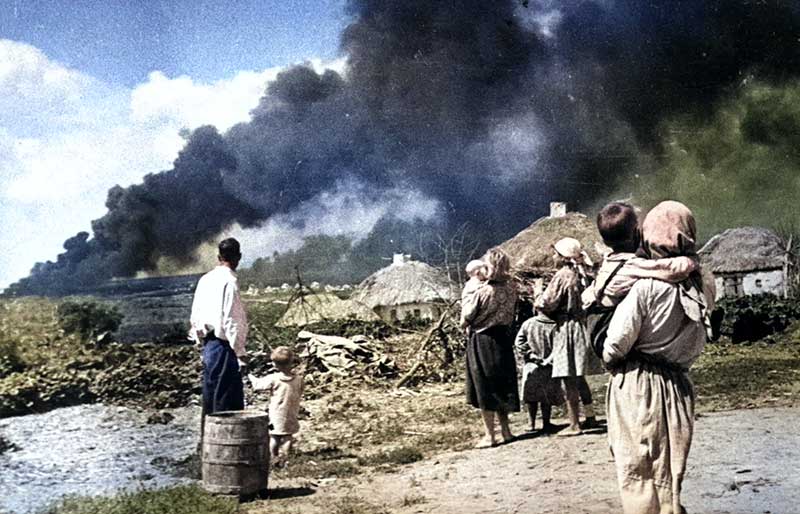
After the disclosure of Manstein's involvement in Nazi atrocities in the Soviet Union, a British military tribunal brought him before it, accusing him of mistreating prisoners of war and civilians and implementing scorched earth tactics. At the commencement of the trial in Hamburg in August 1949, Manstein was optimistic about securing an acquittal by disavowing any awareness of war crimes in his operational zones; however, this strategy backfired when the prosecution presented documents that demonstrated his endorsement of terrorism against the civilian populace. Moreover, the former commander of Einsatzgruppe D testified that he had coordinated “special actions” with the AOK 11 personnel.
Manstein demonstrated significant failure in his self-defense during legal proceedings, especially concerning allegations that he had commanded the execution of Soviet political officers during the advance on Leningrad. Surprisingly, Manstein asserted that international law did not provide protection to commissars, who wore military uniforms in compliance with the Hague Convention. Notwithstanding the sympathy garnered during his trial, including from former adversaries like Winston Churchill and Bernard Montgomery, Manstein was convicted on two of the 17 charges and received an 18-year prison sentence.
Manstein was incarcerated for four years but was released for “good behavior” in May 1953. Subsequently, he rejoined his family and authored his memoirs, Verlorene Siege (Lost Victories), in 1955, followed by Aus Einem Soldatenleben (From a Soldier's Life) in 1958. West Germany initiated the establishment of the Bundeswehr, enlisting Manstein and several retired senior Wehrmacht officers to provide counsel on its formation. Between November 1955 and June 1956, Manstein briefly resumed writing memos on military organization, and some of his recommendations regarding brigade structure were implemented. However, the West German Government hesitated to grant a convicted war criminal a prominent position in the Bundeswehr, leading to his gradual marginalization as the new army took shape.
On August 10, 1946, Brigadier General Telford Taylor, the American Prosecutor, initiated one of the most severe cross-examinations of the trial. The emphasis was on Manstein's conduct as the commander of the German 11th Army from September 1941 to 1944. Taylor reads from an order dated July 23, 1941, signed by Keitel. Reference was also made to the Commissar Order and a specific order he endorsed. He struggled to remember these.
In 1949, Erich von Manstein was tried in Hamburg for war crimes and was convicted on nine of seventeen charges, including the mistreatment of prisoners of war and the failure to safeguard civilian lives within his operational jurisdiction. His eighteen-year prison sentence was subsequently diminished to twelve years, and he served merely four years before his release in 1953.
By the early 1960s, Manstein's concepts of maneuver warfare had become increasingly obsolete for a Bundeswehr focused exclusively on defense. Having relocated from his previous residence in East Germany, he transferred his family to the village of Irschenhausen, situated south of Munich. He engaged in veterans' affairs and literary pursuits. His spouse Jutta passed away in March 1966, leaving him solitary and in deteriorating health. On June 10, 1973, von Manstein succumbed to a stroke at the age of 85.
Inside the Mind of Erich von Manstein
Manstein consistently sought to depict himself as a strategic chess player who intelligently awaited his adversary's error and then, at the opportune moment, executed a decisive blow at a pivotal juncture through an unforeseen maneuver. Manstein's operational style prioritized surprise, maneuver, and offense, which were the defining characteristics of the doctrine established by Hans von Seeckt for the Reichswehr in 1921. In Sichelschnitt, Trappenjagd, and the “backhand blow," Manstein aimed to vanquish more formidable adversaries through a surprise assault from an unforeseen direction, achieving success in each instance. Nonetheless, Bewegungskrieg became a fundamental aspect of German military strategy following the expensive lessons learned from Stellungskrieg in World War I, although not all German commanders were as fervent proponents of maneuver warfare as Manstein.
Manstein's operational strategies emphasized the principles of simplicity and concentration, meticulously strengthening his primary center of gravity with combat enhancers (engineers, assault guns) while utilizing the minimal number of independent formations. Manstein favored straightforward single envelopments, which proved effective in the Ardennes and the Kerch Peninsula. He possessed a profound understanding of temporal and spatial factors, which is an essential prerequisite for effective battlefield command. The sole principle of war that Manstein insufficiently applied was the economy of force. Constrained resources compelled Manstein to undertake significant risks in certain areas to concentrate his elite forces for offensive maneuvers; however, this demanded an accurate evaluation of enemy intentions and capabilities, a domain in which Manstein was not particularly skilled. Repeatedly, Manstein misjudged Soviet intentions, leaving minimal German blocking forces vulnerable to encirclement, as evidenced by Sponeck's troops at Kerch in December 1941 and Armeeabteilung Hollidt during Zitadelle.
Rüdiger, Manstein's son, later remarked that his father's principal flaw was his failure to comprehend that he could not manipulate Hitler through mere military reasoning. Manstein's rapport with Hitler was favorable solely during periods of military success; however, Hitler never fully trusted him. Despite Manstein's grievances regarding Hitler's interference, he possessed considerable autonomy as the commander of AOK 11 in the Crimea. Hitler's fixation on retaining the Kuban, Rostov, the Donbas region, and Kharkov constrained Manstein's concept of Bewegungskrieg when he assumed command over Heeresgruppe Don.
Compelled to maintain designated territorial objectives at all costs, Manstein was required to engage in a Stellungskrieg in certain sectors of his front, consequently weakening the forces available for counteroffensives. Following Germany's loss of initiative after Kursk, Manstein's approach became incompatible with the circumstances, primarily focusing on exchanging territory for time and avoiding encirclement of his forces. As a defensive commander, Manstein was significantly less effective than Kesselring, Model, or Raus in restraining enemy offensives.
Manstein's interactions with subordinates were frequently combative as a commander. He was rarely inclined to take risks in making difficult command decisions that could jeopardize his position, and he neglected to support his subordinates (Sponeck, Hausser, Lanz, Kempf, Hoth) when they acted to preserve their commands. Manstein exhibited minimal loyalty to his subordinates during the war and appeared to consider himself indispensable on the Eastern Front.
As a leader, Manstein lacked the charisma and authoritative presence necessary to assert his will over obstinate subordinates like Hoth, Hausser, and Hube, who frequently disregarded his directives. Manstein exhibited an effete aspect of his personality, evident in his affinity for luxuries, including his command train, residing in castles distant from the front lines, and his nightly bridge games. His front-line commanders acknowledged his operational proficiency; however, his deficiency in courage failed to motivate others. Dietrich von Choltitz, who led a regiment at Sevastopol, later remarked that Hitler held little regard for Manstein.
Manstein's political views were exceedingly simplistic, like those of many career officers, and he initially held resentment toward the Nazi regime. However, upon the elimination of his anti-Hitler superiors and the jeopardization of his own career, Manstein underwent a shift in perspective. Upon Hitler's endorsement of the Sichelschnitt strategy, Manstein became an enthusiastic supporter and held admiration for the Führer until late 1942. Despite finding the Kommissar Befehl of 1941 objectionable, Manstein complied with it.
In Crimea, Manstein chose to adhere to the Nazi directives established by his superior, Reichenau, and issued an order permitting his forces to “exterminate the Judeo-Bolshevist” system. He likely harbored racist sentiments toward Jews and Slavs before the war, as evidenced by his perspectives on Poland and Czechoslovakia. He disregarded the protests of some aides regarding the nearby SS “special actions." Manstein's critique of Hitler was only focused on the Führer's invasion upon his command authority rather than Nazi policies.
Despite rejecting all attempts to involve him in the anti-Hitler conspiracy, Manstein frequently derided the Führer openly in front of his staff, sarcastically labeling him as “the greatest military mind of all time." This hidden opposition was exceedingly unprofessional in undermining military discipline and revealed his deficiency in moral courage. Manstein consistently lamented Hitler's interference yet constantly submitted. Guderian observed this and remarked that Manstein “never experienced a favorable day” when interacting with Hitler.
Erich von Mansteins’ Life in Words
Manstein, though largely obscure beyond the Wehrmacht until 1940, rose to significant prominence and acclaim in 1941–42. On January 10, 1944, Manstein appeared on the cover of the American news magazine Time. Unlike the flamboyant Rommel or the formidable Model, Manstein cultivated an image of himself as a brilliant “chess player," employing his intellectual prowess to outmaneuver his adversaries.
The Wehrmacht experienced polarized opinions regarding Manstein. A significant number of senior officers perceived him as arrogant, especially due to his tendency to disregard the perspectives of others within the General Staff. His former mentor, Ludwig Beck, ultimately severed his friendship with Manstein and later remarked that he was “not a man of negative character, but rather a man devoid of character altogether." Guderian collaborated with Manstein to formulate the Sichelschnitt plan, which Manstein omitted from his memoirs, and believed that Manstein sought to claim sole credit, despite lacking direct knowledge of Panzer operations at that time. Guderian recognized Manstein as “our finest operational intellect” but perceived him more as an exemplary staff officer than as a battlefield leader. Subsequently, Wolfram von Richthofen, commander of Fliegerkorps VIII and a close associate of Manstein during 1942–43, remarked that “he is the finest tactician and combat commander we possess.”
Manstein's memoirs, Lost Victories, appeared in Germany in 1955, and these memoirs were particularly noticeable in the way the author interpreted or omitted any items related to the war crimes for which he had just served four years in prison. Instead of focusing on his own wartime activities, the author used Lost Victories to build the case that Germany could have won the war in the east—or at least achieved a draw—if Hitler had listened to his generals and allowed them to conduct the kind of maneuver warfare at which the Wehrmacht excelled.
(Hitlers Krieger) Hitler's Warrior: Erich von Manstein. 1998 German documentary produced by ZDF in German language (Apologies, no English subtitles available). Restored (video/film) document.
Manstein directly blamed Hitler for the demise of Bewegungskrieg, accusing him of "throwing victory away." He also argued that Hitler's failure to appoint him as supreme commander of the Eastern Front was one of his greatest mistakes, given his unique qualifications. Western audiences, especially British military writers like Basil Liddell Hart, highly appreciated Lost Victories, considering Manstein's methods as the pinnacle of the "indirect approach." Hart lavished praise on Manstein, writing that “the ablest of all the German generals was probably Field Marshall Erich von Manstein. Field Marshall Erich von Manstein possessed an exceptional strategic sense and a deeper comprehension of mechanized weapons than any other generals outside the tank school.
Due to the success and readability of Lost Victories as well as recognition of his role in developing the 1940 Sichelschnitt Plan, other historians echoed Hart's evaluation and began to speak of Manstein as “Hitler's most brilliant general” and the “foremost practitioner of large-scale mechanized warfare." However, Hitler himself regarded Walther Model as his “best Generalfeldmarschall," probably followed by Erwin Rommel. Claims that Manstein was a great armored commander ignore the fact that he never had more than a single Panzer division under his control as either a corps or army commander and that he never commanded a Panzerarmee. By the time that he did gain control over several Panzer divisions, as an army group commander, he was far removed from their day-to-day activities. Claims that Manstein was a “superb strategist” also seem untenable, since he never served in the OKW or OKH in wartime.
Indeed, Manstein's reputation is almost entirely based on just three factors: his role in Sichelschnitt, the capture of Sevastopol, and the “backhand blow," all of which figure prominently in Lost Victories. His memoirs gloss over his defeats, which began at Soltsy in 1941 and extended to the loss of Kiev. Today, he is still regarded by many as an “operational genius," but Manstein did not attract biography writers after the war, unlike flashier commanders such as Erwin Rommel. Due to Manstein's conviction for war crimes and the anti-Semitism he demonstrated in his trial, he did not appear to be a sympathetic figure for biographers. Today, Manstein's legacy has begun a slide into relative obscurity as memories of his victories fade, and modern Germany has little need for remembering his principles of Bewegungskrieg.
Generalfeldmarschall Erich von Manstein - Quick Facts
- German Empire (1866-1918)
- Germany - Weimar Republic (1919-33)
- Germany Nazi (1933-1945)
- Germany (1949-Today)
- 11th Army (German Wehrmacht 1940-1944)
- 18th Infantry Division (German Wehrmacht 1934-1945)
- Army Group Don (German Army 1942-1943)
- Army Group South (German Army 1939-1945)
- LVI Panzer Corps (German Army 1941-1945)
- XXXVIII Army Corps (German Wehrmacht 1940-1945)
- WWI (1914-1918)
- Weimar Republic (1918-1933)
- WWII (1939-1945)
- {{#owner}}
- {{#url}} {{#avatarSrc}}
{{name}} {{/url}} {{^url}} {{#avatar}} {{& avatar}} {{/avatar}} {{name}} {{/url}} - {{/owner}} {{#created}}
- {{created}} {{/created}}


